Front yards thrive on first impressions, and few materials make a stronger, lower-maintenance statement than the strategic mix of rocks and mulch. Stones add lasting texture, direct water, and never need weekly cutting, while organic mulch feeds soil, deters weeds, and frames plant color in bold strokes. Landscape pros and recent guides alike underline that combining the two can cut upkeep time in half yet boost curb appeal dramatically. Rather than offering a single formula, the ideas below show how rocks and mulch morph to suit every style, from polished modern entries to relaxed cottage corners—inviting you to choose the combinations that reflect your own home’s spirit.
1. Rock River Bed For Front Yard Drainage
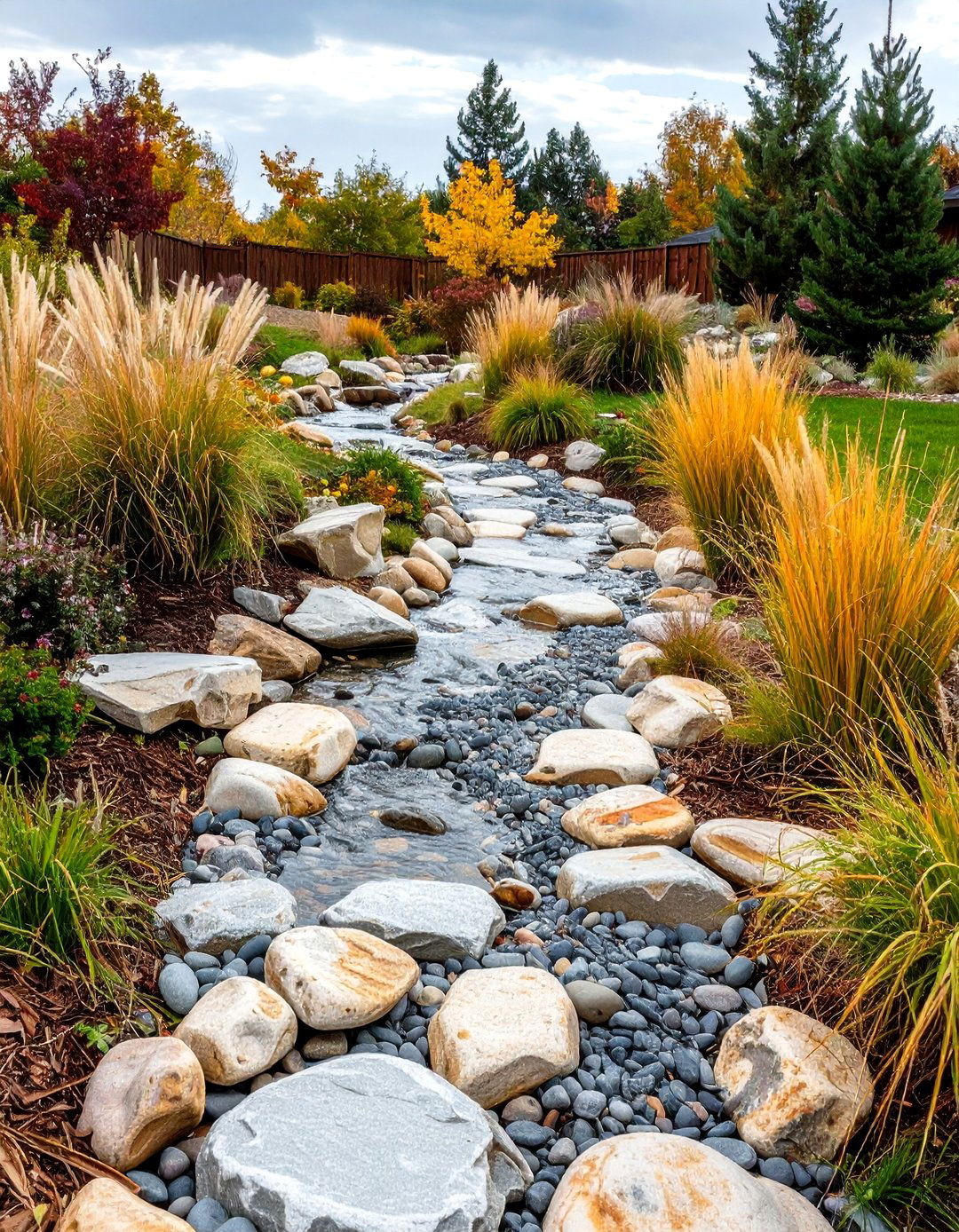
A dry creek made of smooth river rock can guide stormwater away from your foundation while giving front yard landscaping an eye-catching focal line. Start by carving a shallow, meandering trench from the downspout toward the street, then layer landscape fabric, pour mixed-size stones, and tuck a border of shredded wood mulch around the edges to soften the look. The contrasting textures mimic a natural stream, control erosion, and eliminate soggy turf that often turns to mud, benefits highlighted by landscaping pros. Choose gray or tan rocks that echo your home’s trim, and finish by inserting clumps of native grasses through the mulch for movement and color.
2. Boulder Island as a Low-Maintenance Focal Point
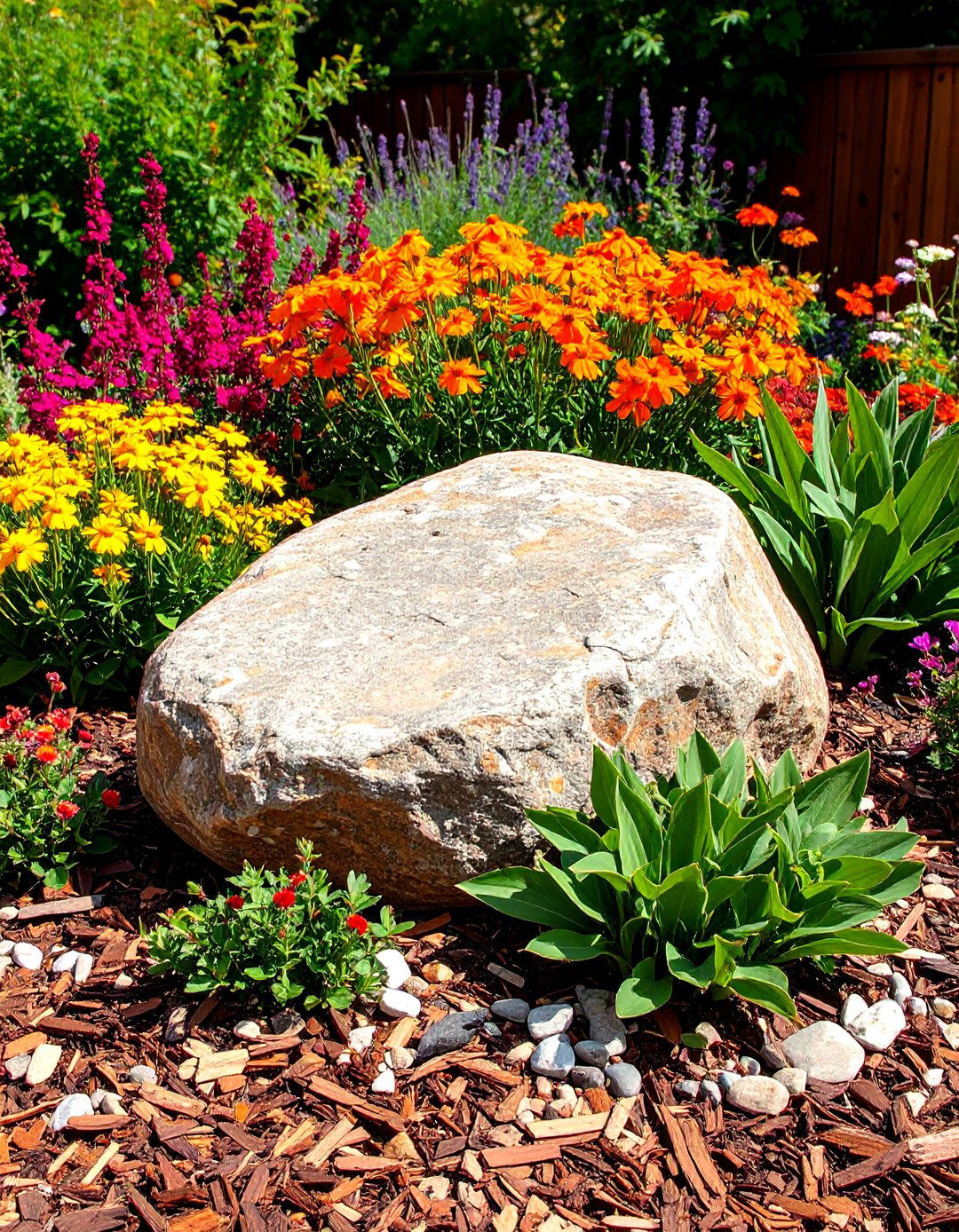
Unlike a cluttered flowerbed, one commanding boulder surrounded by complementary rocks creates a striking centerpiece that stays picture-perfect through every season. Position the stone slightly offset in a mulched island so visitors glimpse its rugged face as they pull into the driveway, then ring the perimeter with smaller cobbles that help anchor the mulch. Slip groups of drought-friendly perennials into the gaps; their roots appreciate the free-draining pockets, and you’ll only need to refresh the bark each spring. Landscape designers note that oversized stones add instant height and sculptural texture where shrubs struggle, dramatically boosting front yard curb appeal without extra work.
3. Pebble and Mulch Checkerboard Path
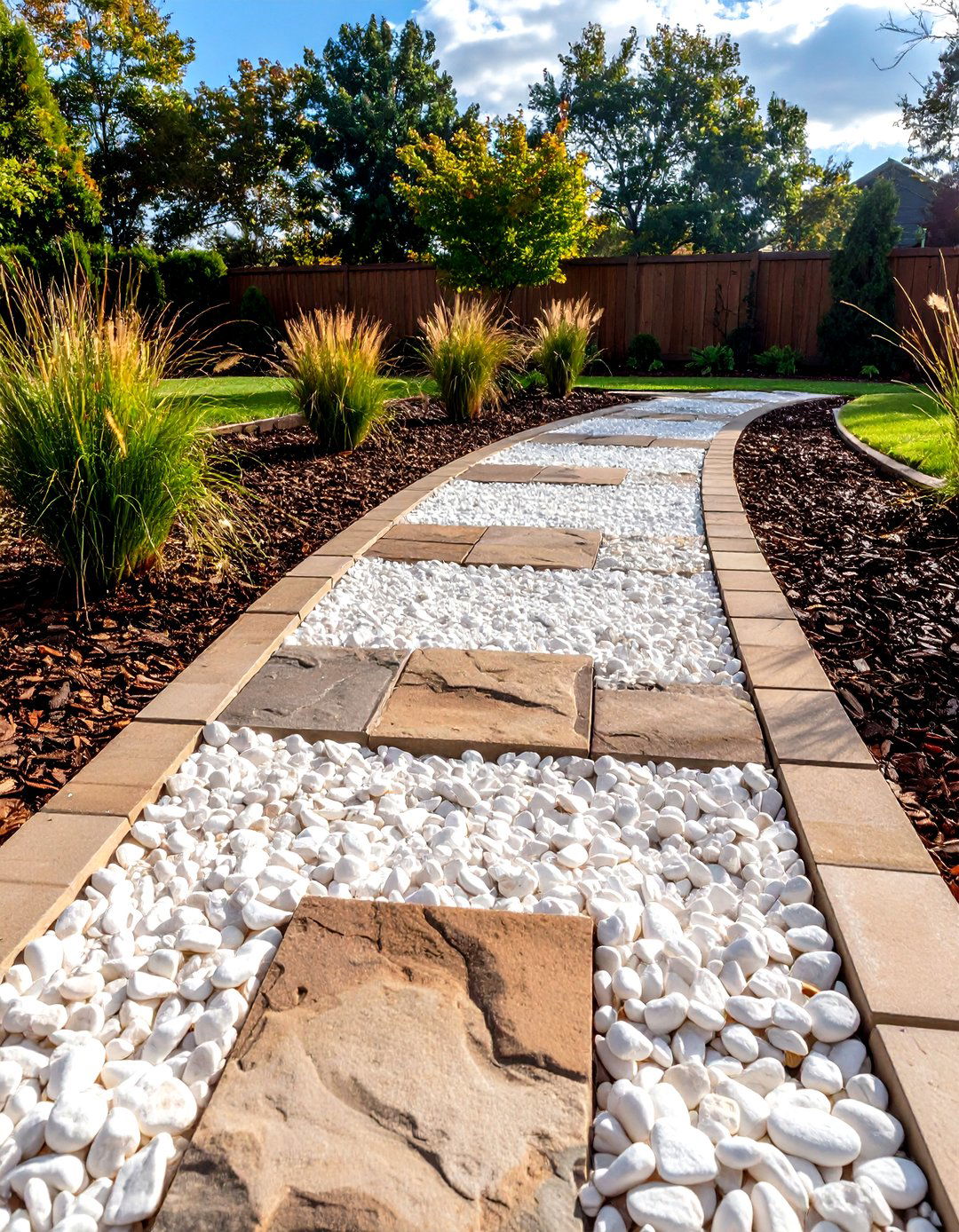
A playful checkerboard path of white pea gravel squares alternating with rich brown mulch blocks guides guests to your door like an outdoor game board and keeps soil compaction at bay. Lay a simple grid with pressure-treated edging, spread landscape fabric under the rock squares, and secure the mulch sections with metal pins so materials never mingle. The repeating light-dark pattern leads the eye forward, highlights foundation plantings, and provides excellent drainage for rainy climates. Retail guides point out that gravel paths cost less than poured concrete yet outlast traditional wood mulch alone, making this front yard upgrade budget-smart and chic.
4. Natural-Stone Edging for Razor-Sharp Borders
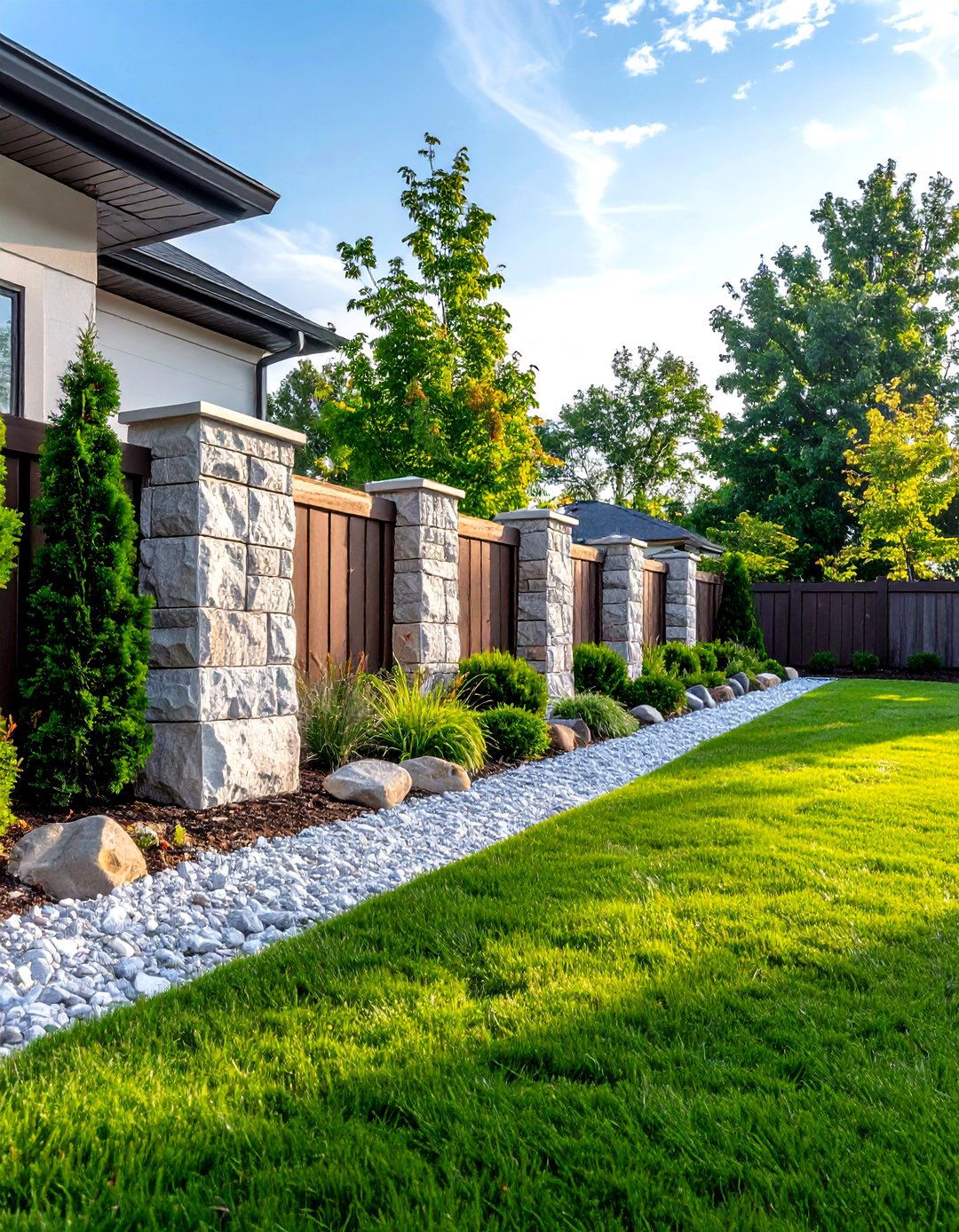
Consider crisp natural-stone edging to keep mulch neatly in place and create a professional border along front walkways. First excavate an eight-inch-deep trench, add a base of compacted road gravel, then seat fist-sized fieldstones upright so their tops sit flush with the turf for easy mowing—a trick seasoned DIYers swear by. The hefty stones block mulch from washing onto the path, define planting beds, and reduce the need for string-trimmer touch-ups each weekend. Enthusiasts on landscaping forums emphasize that properly installed rock edging lasts decades longer than plastic alternatives and lets you swap mulch colors whenever fashion changes without re-digging the line.
5. Tiered Rock Terraces on a Sloped Front Yard
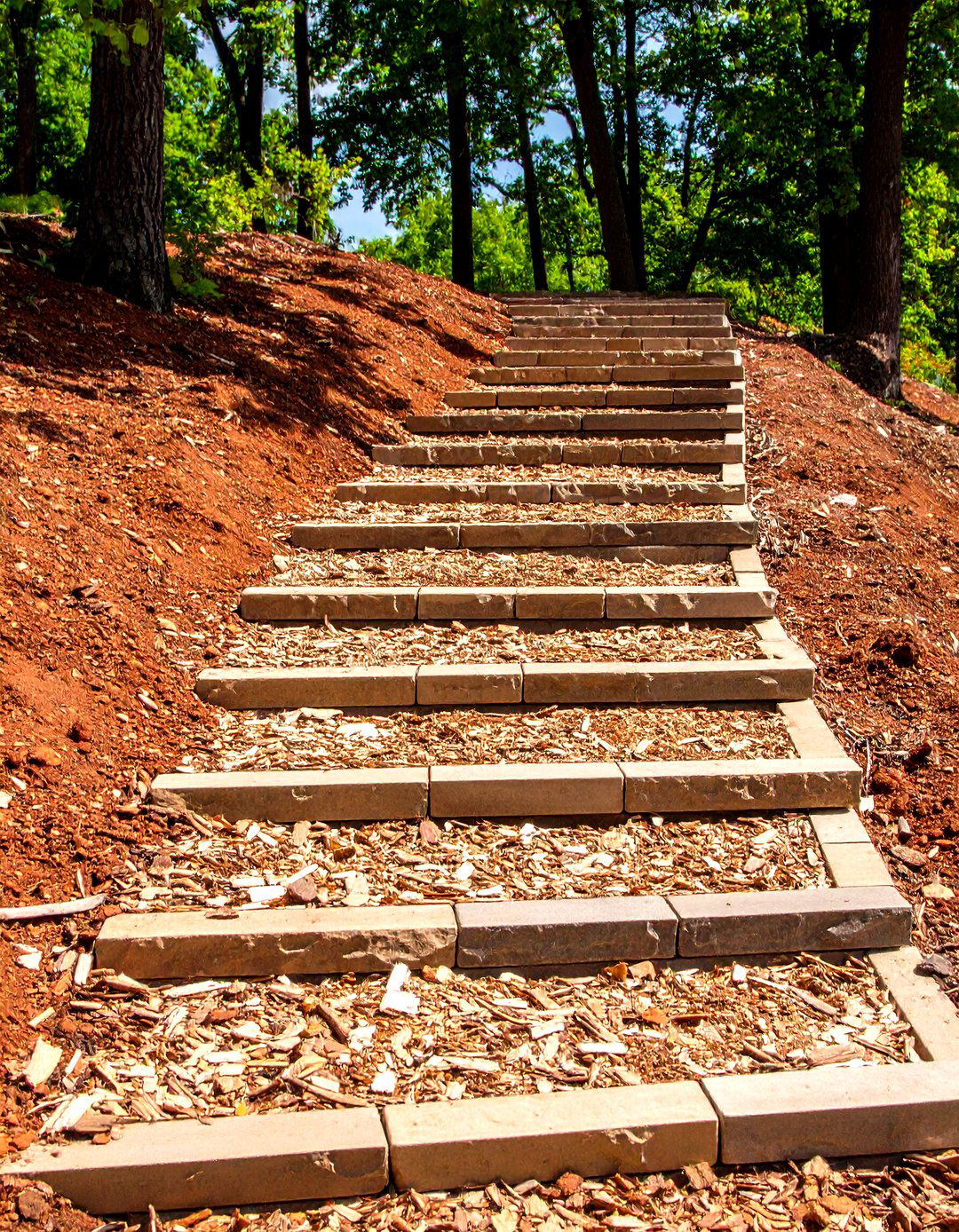
Despite a challenging slope, you can craft tiered rock terraces filled with mulch to tame erosion and add planting pockets bursting with color. Stack flat stones in gentle steps up the grade, backfilling each level with well-draining soil before topping with shredded bark. The mini retaining walls break heavy runoff, and the mulch conserves moisture so flowers thrive where grass once scorched. Designers highlight how boulders double as informal seating for evening chats and remove the need for hard-to-push mowers on steep ground, turning an eyesore into a dramatic layered front yard statement that draws every curious neighbor’s eye daily.
6. Rock-and-Mulch Spiral Path to the Porch

To add whimsy, arrange a spiral path of crushed granite that curls from the sidewalk to your porch, filling the negative space between rings with cocoa-brown mulch. Visitors follow the gentle curve like a garden labyrinth, slowing down to admire plantings and giving your front yard landscaping unexpected depth. Install metal edging to keep the rock ribbon crisp; then scatter dwarf lavender and thyme through the mulched bands for fragrance with every step. Houzz portfolios show that curving walkways make small lots appear wider and provide photo-worthy charm without increasing water or mowing needs.
7. Water-Wise Xeriscape With Rocks and Mulch

As droughts intensify, swapping thirsty lawn for a xeriscape of gravel, chunky river stones, and thick mulch blankets offers stylish conservation. Amend soil with compost, lay drip irrigation, then group drought-tolerant sages, yucca, and agave in rocky berms that shed excess rain. A top layer of shredded bark around root zones locks in precious moisture, while pale pebbles reflect heat to keep plant crowns cool—principles outlined in water-wise gardening guides. Homeowners routinely report cutting outdoor water use by more than half and reclaiming free weekend hours no longer spent pushing a sprinkler across what was once a demanding lawnscape.
8. Rock Tree Rings That Keep Mulch in Place
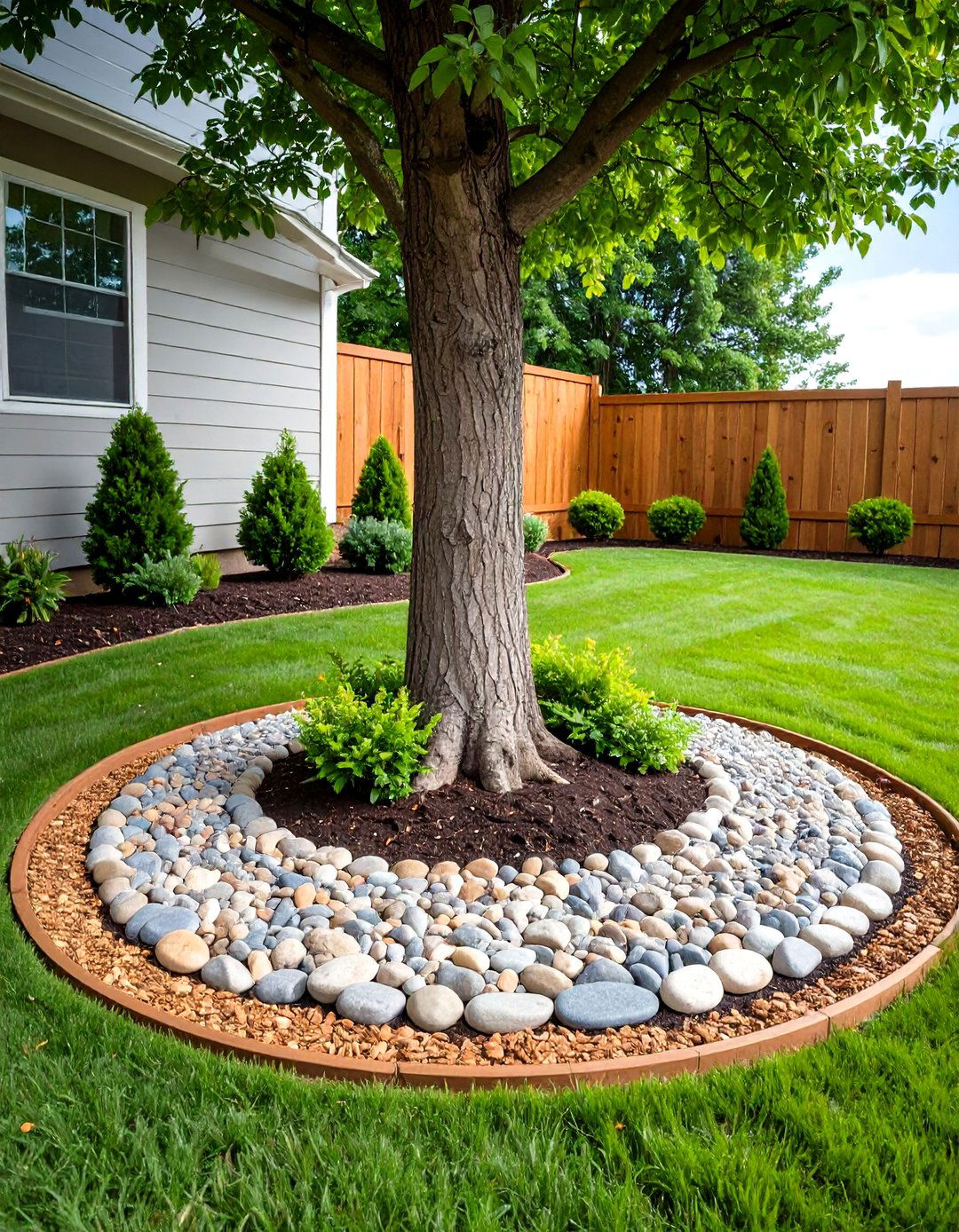
Looking for weed control around majestic shade trees? Ring each trunk with a two-foot circle of river rock bordered by hardwood mulch. The stones hold moisture, stop mower nicks, and create a tidy frame that highlights bark texture. Garden experts explain that combining porous rock with organic mulch forms a dual barrier: rocks deter squirrels from digging, and the mulch smothers sprouting weeds while feeding soil as it breaks down. Spread the mulch only two inches thick to avoid trunk rot, and enjoy a front yard accent that never needs edging or constant herbicide applications through summer heat waves.
9. Pea-Gravel Courtyard With Mulched Planter Pods
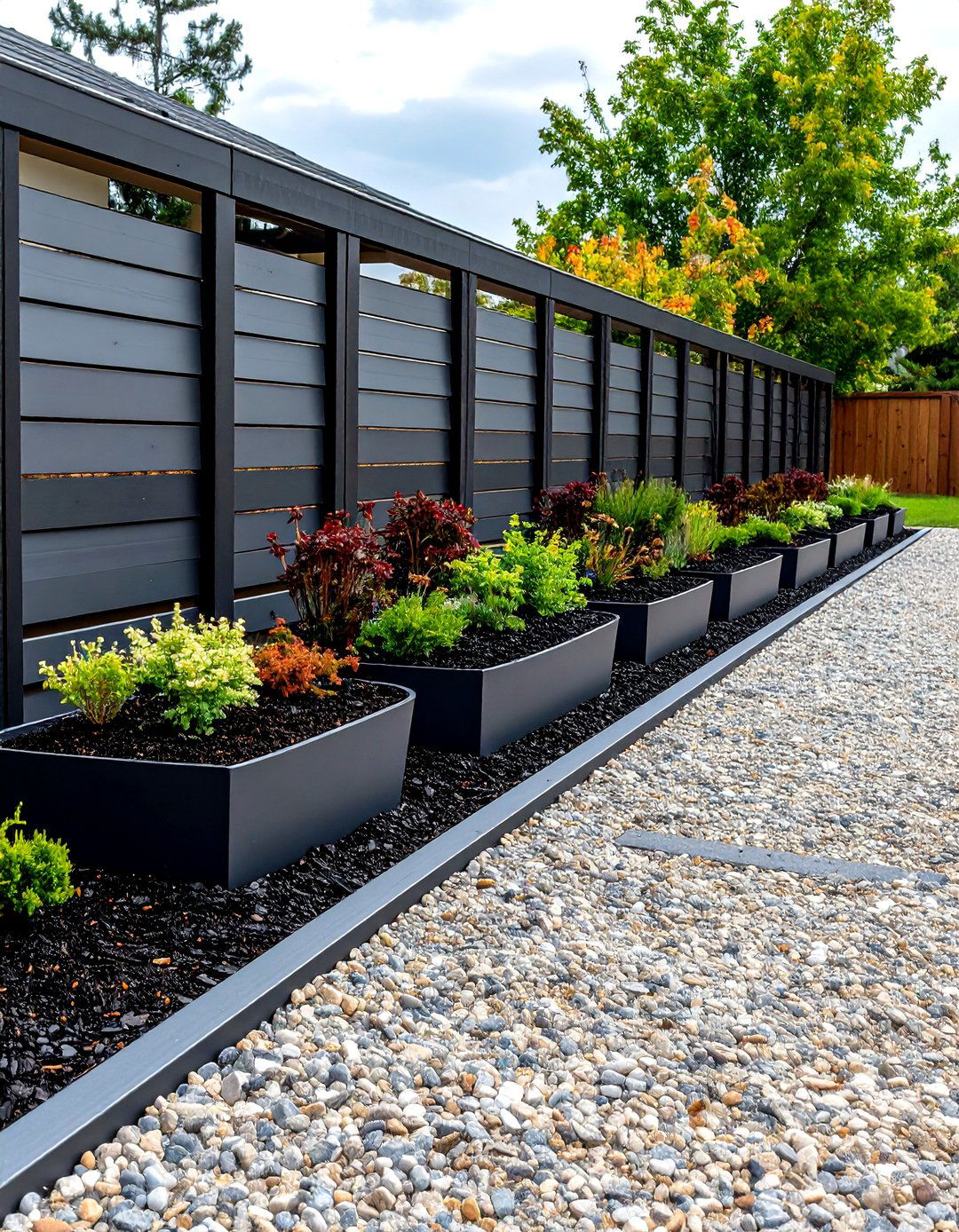
A central pea-gravel pad edged by sleek steel strips can double as a casual seating court, while kidney-shaped planter pods filled with dark mulch soften the geometry. Spread three inches of rounded pea stone over weed fabric for a crunch underfoot reminiscent of European cafés, then arrange lounge chairs and a small fire bowl. Designers writing about low-cost landscape refreshes praise gravel for its affordability and permeability, noting that rain percolates instead of puddling. The surrounding mulched beds accept pops of seasonal color, so you refresh plants, not hardscape, when trends change—saving time and stretching budget even further.
10. Front Entry Rock Mosaic Over Mulch Base
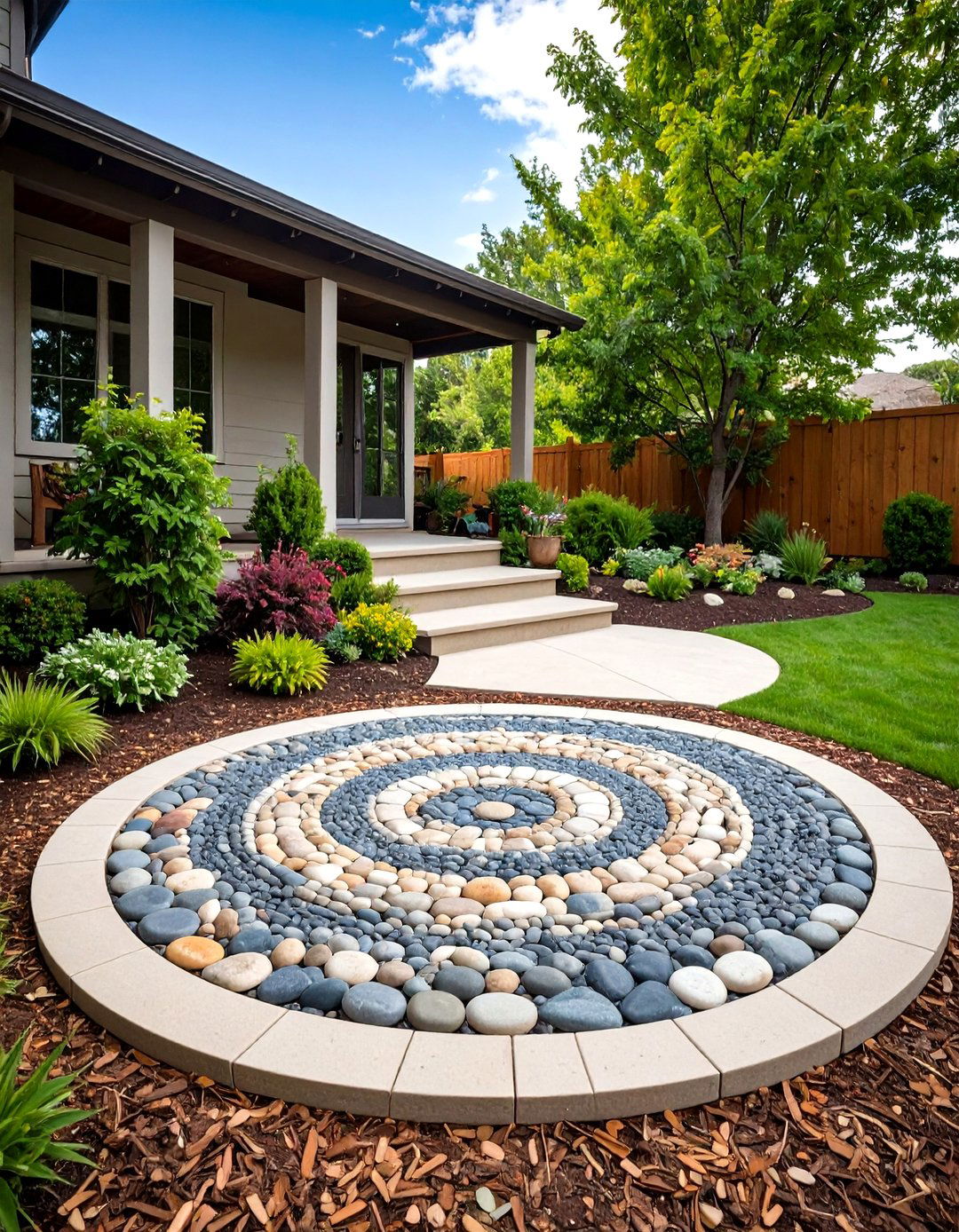
For a show-stopping welcome, set a circular mosaic of flat river pebbles in mortar at the base of your steps, then surround the design with cedar mulch to make the colors pop. The solid stone center handles foot traffic better than pavers, and the mulched border allows quick adjustments if you ever widen the flower beds. DIY guides from big-box retailers highlight how contrasting textures beside the door draw eyes upward to the house number and porch décor. Seal the stones annually with penetrating sealer and top up the mulch each spring for enduring sparkle that impresses every visitor.
11. Rock-and-Mulch Lawn Swap for Easy Care

By replacing patchy turf with a broad sweep of decorative gravel punctuated by sweeping mulch beds, you slash mowing to zero yet keep your front yard landscaping vibrant all year. Rake the soil level, install permeable fabric, then pour pale river rock to the curb line for a modern desert vibe. Curving islands of bark mulch host clusters of evergreen shrubs, offering color even in winter. Gardeners who have made the switch report lower water bills and far fewer weeds—a benefit enthusiasts document in community project galleries showcasing rock and mulch makeovers that inspire neighbors to follow the trend.
12. High-Contrast Gravel and Black Mulch Banding
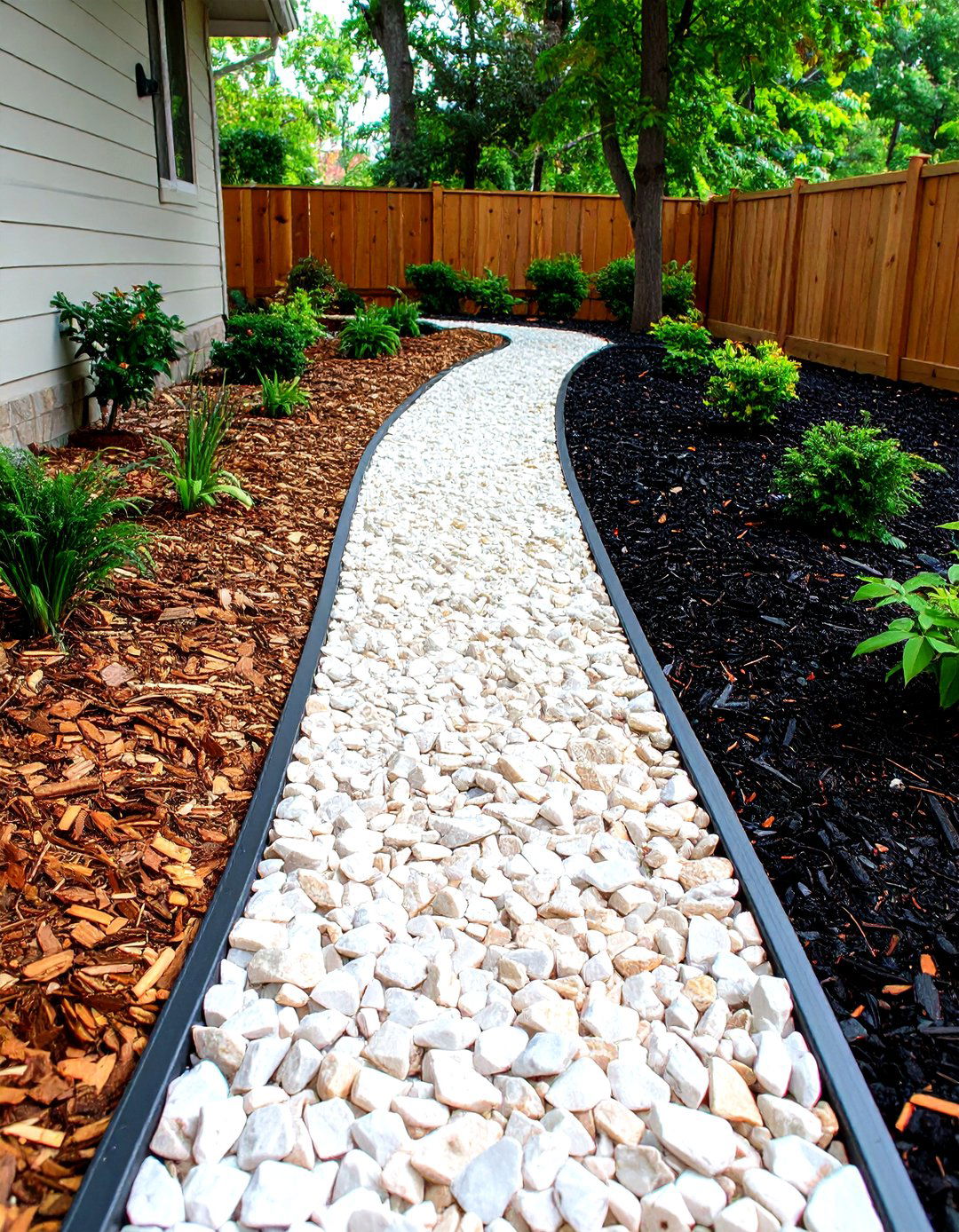
For instant drama, pour bright white marble chips in a ribbon along the foundation, then edge that stripe with midnight-black hardwood mulch. The light-dark pairing spotlights shrubs’ green foliage and makes a modest façade feel fresh and contemporary. Home styling features note that gravel reflects sunlight onto lower leaves, promoting bushier growth, while the dark mulch absorbs heat, encouraging early spring soil warmth. Lay steel or aluminum edging between the materials to prevent mixing, and refresh the mulch annually; the rocks will keep their sparkle for decades with an occasional hose rinse even during scorching midsummer afternoons outside temperatures.
13. Mulch-Filled Joints Between Flagstone Steps
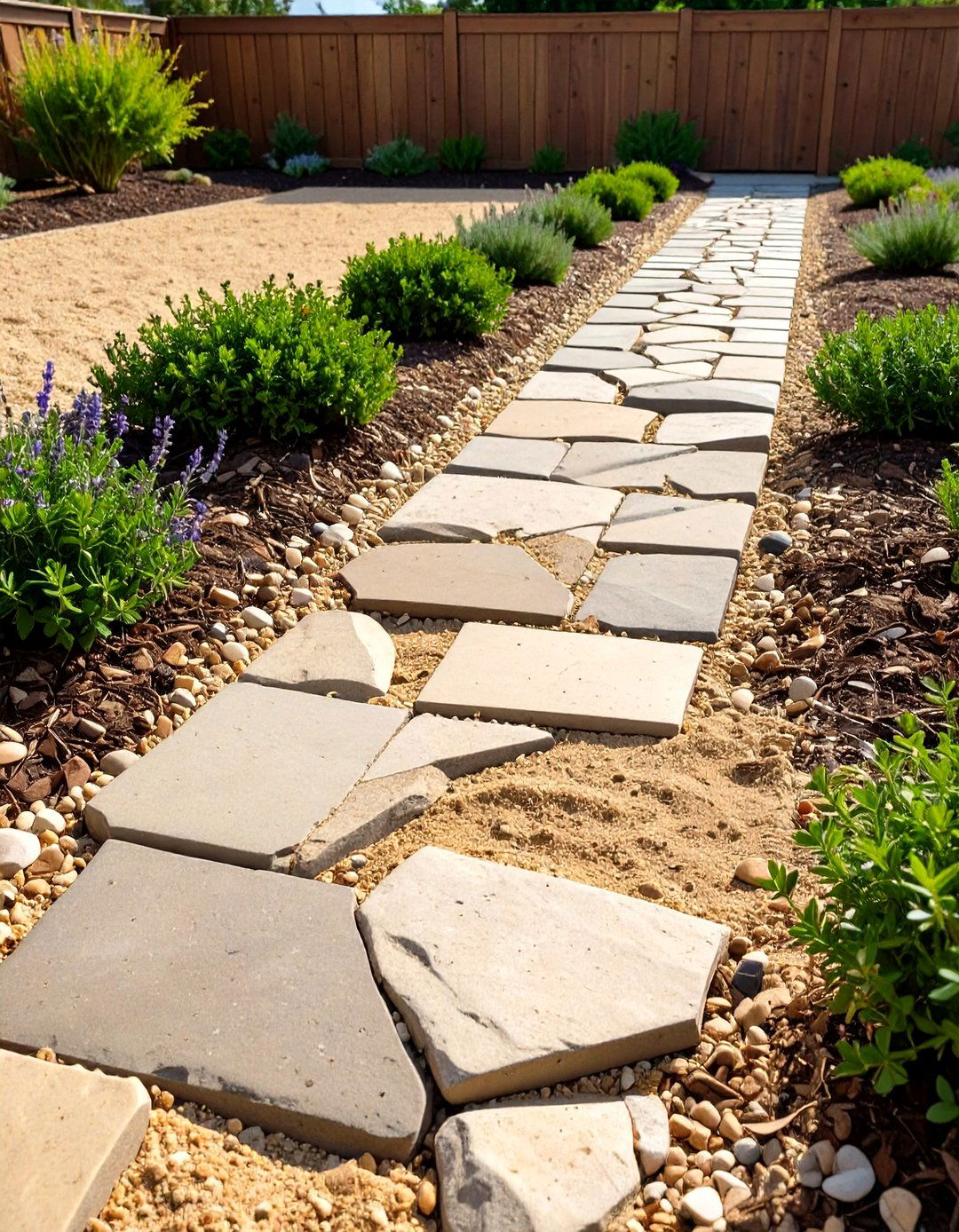
One creative yet simple trick is to press irregular flagstones into a bed of compacted sand, then sweep natural mulch into the joints instead of mortar. The woody fill cushions footsteps, retains moisture for creeping thyme planted along the edges, and makes future repairs as easy as topping up the bark. Veteran landscapers on do-it-yourself boards add that mulch joints stay cooler on bare feet than concrete and let rain filter through, reducing runoff toward the street. A quick rake each month fluffs the material back in place, keeping the front walkway tidy and welcoming for guests after storms.
14. Succulent Rock Garden Set in Warm Mulch
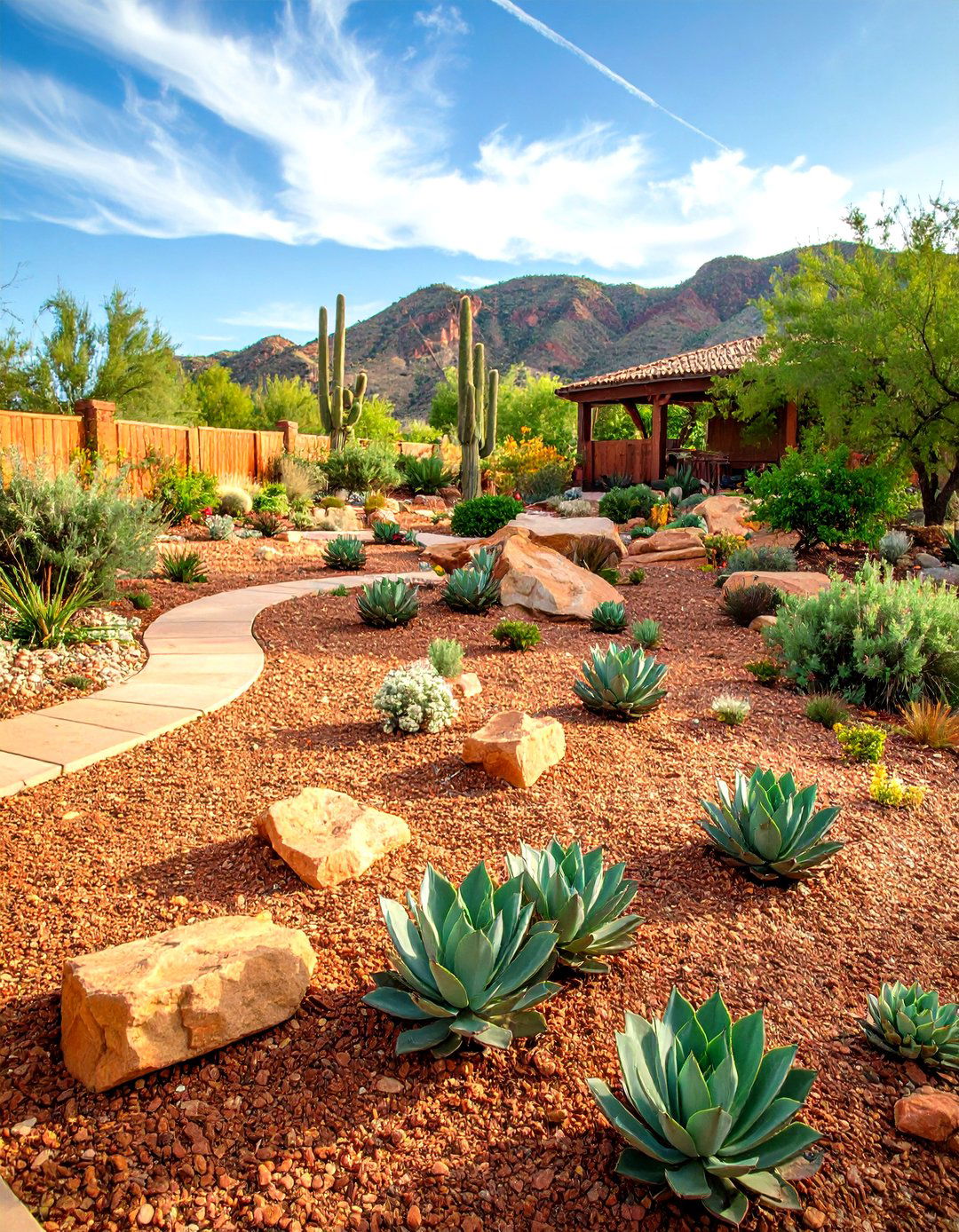
Surprisingly little water is needed when you cluster sculptural succulents among varying sizes of sandstone and spread a cinnamon-hued mulch blanket around their bases. The stones elevate plant crowns for airflow, and the mulch prevents evaporation while adding visual warmth. Water-wise manuals point out that pairing rocks and organic matter moderates extreme temperatures, letting aloes and echeveria overwinter even in cooler zones. Add a dusting of crushed granite as top-dressing to echo the larger rocks, and you’ll have a front yard vignette that reads like a desert botanical garden without the travel or high-maintenance irrigation system to sustain beauty.
15. Low Rock Wall With Mulched Perennial Strip
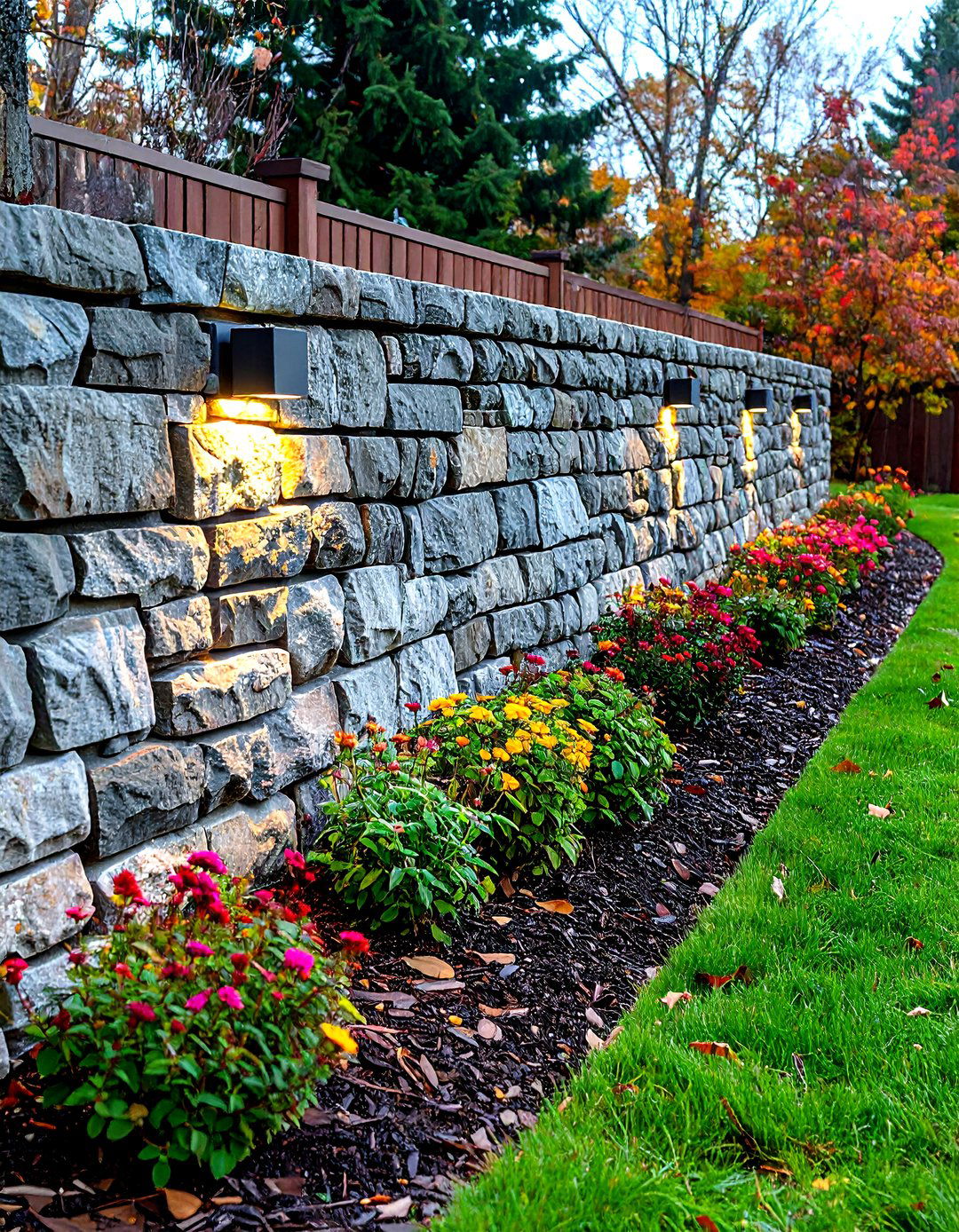
Building a knee-high dry-stack wall from fieldstone across the front edge of your lawn both levels uneven ground and creates an instant raised bed you can pack with rich mulch. The wall doubles as casual seating during neighborhood gatherings, while the mulched strip behind it provides perfect rooting depth for daisies, daylilies, and dwarf conifers. Photo spreads on design sites reveal that the combination gives classic cottage charm without the cost of mortared masonry and keeps soil from migrating onto the sidewalk after storms. Tuck low-voltage lights between stones to make the texture glow at dusk each summer-night soirée.
16. Rock-Framed Rain Garden With Mulch Berms
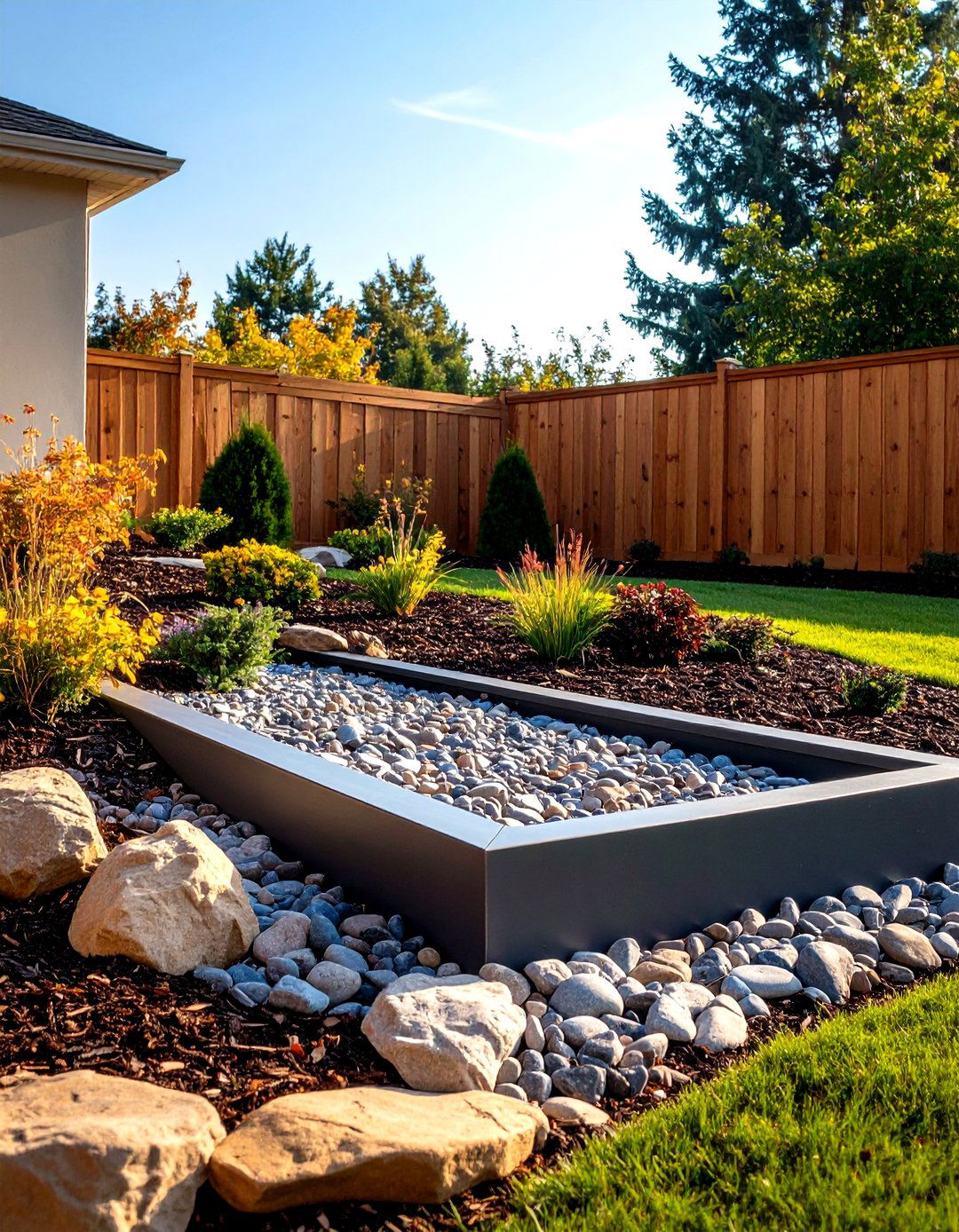
Owing to heavier downpours, channeling roof runoff into a shallow basin lined with decorative cobbles and topped with moisture-loving iris creates both beauty and flood protection. Build a low crescent berm of mixed hardwood mulch on the downhill side to hold water briefly, allowing plant roots to absorb it before filtering into the soil. Sustainable-landscape manuals stress that rock slows water velocity, and the mulch adds nutrients as it breaks down, supporting vigorous blooms. Even during drought, the mulched berm shades the basin floor, retaining the precious trickles captured from your gutters and preventing puddles on your driveway apron.
17. Texture Mix With Graded River Rock and Mulch
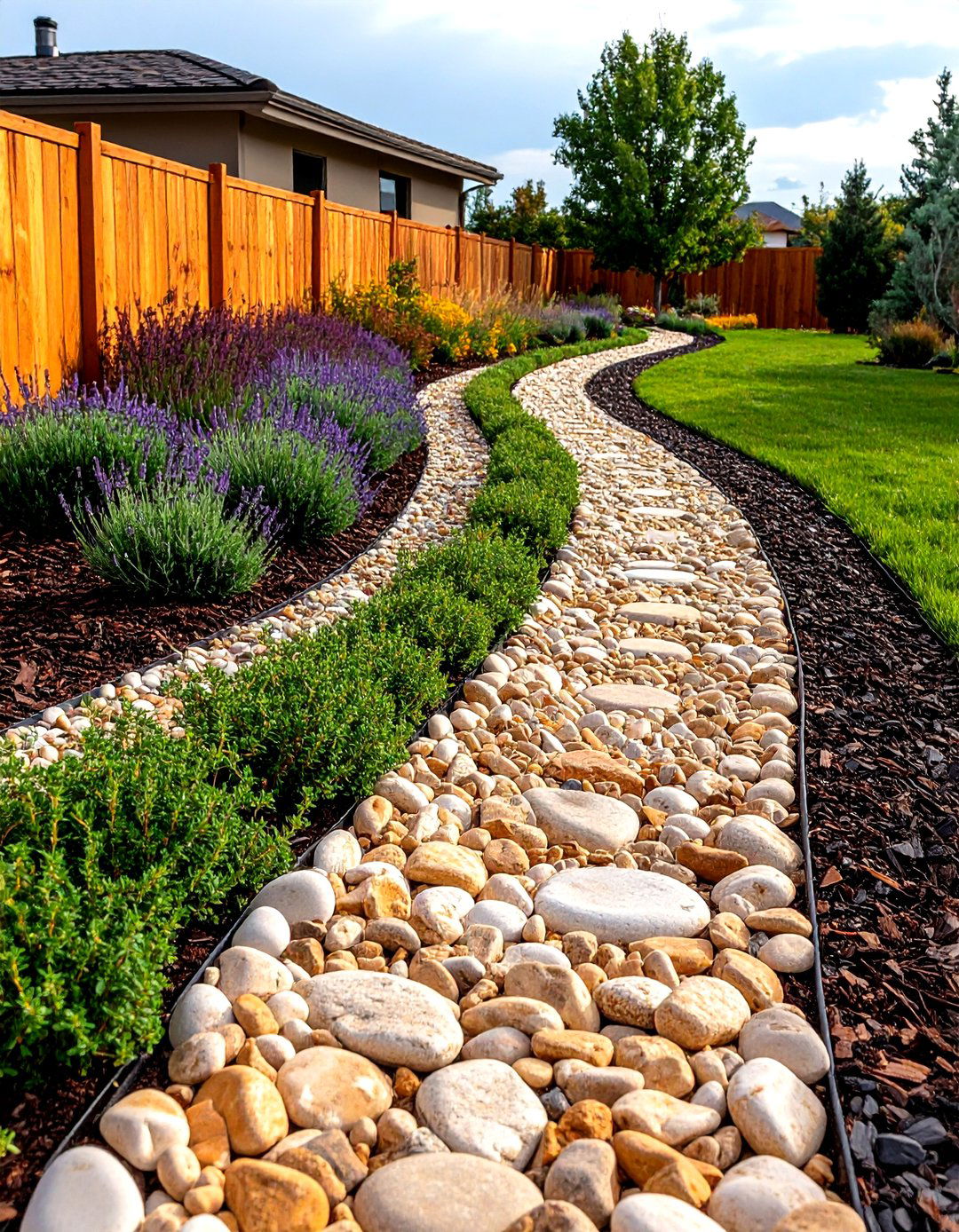
Take curb appeal up a notch by pouring three distinct sizes of river rock—from pea to egg-size—into sweeping bands, then outlining each band with a slim mulch groove. The gradation catches sunlight differently, adding movement without a single flower in bloom. Big-box tutorials emphasize that varying size also limits weed establishment because gaps are uneven. Infill the narrow mulch channels with creeping thyme; the organic strip frames the stone like inlaid wood and gives bees a landing strip. Once established, a quick leaf-blower pass keeps the display pristine, freeing Sunday mornings for coffee instead of constant yard chores outside.
18. Rock Fire-Pit Nook Amid Mulched Beds
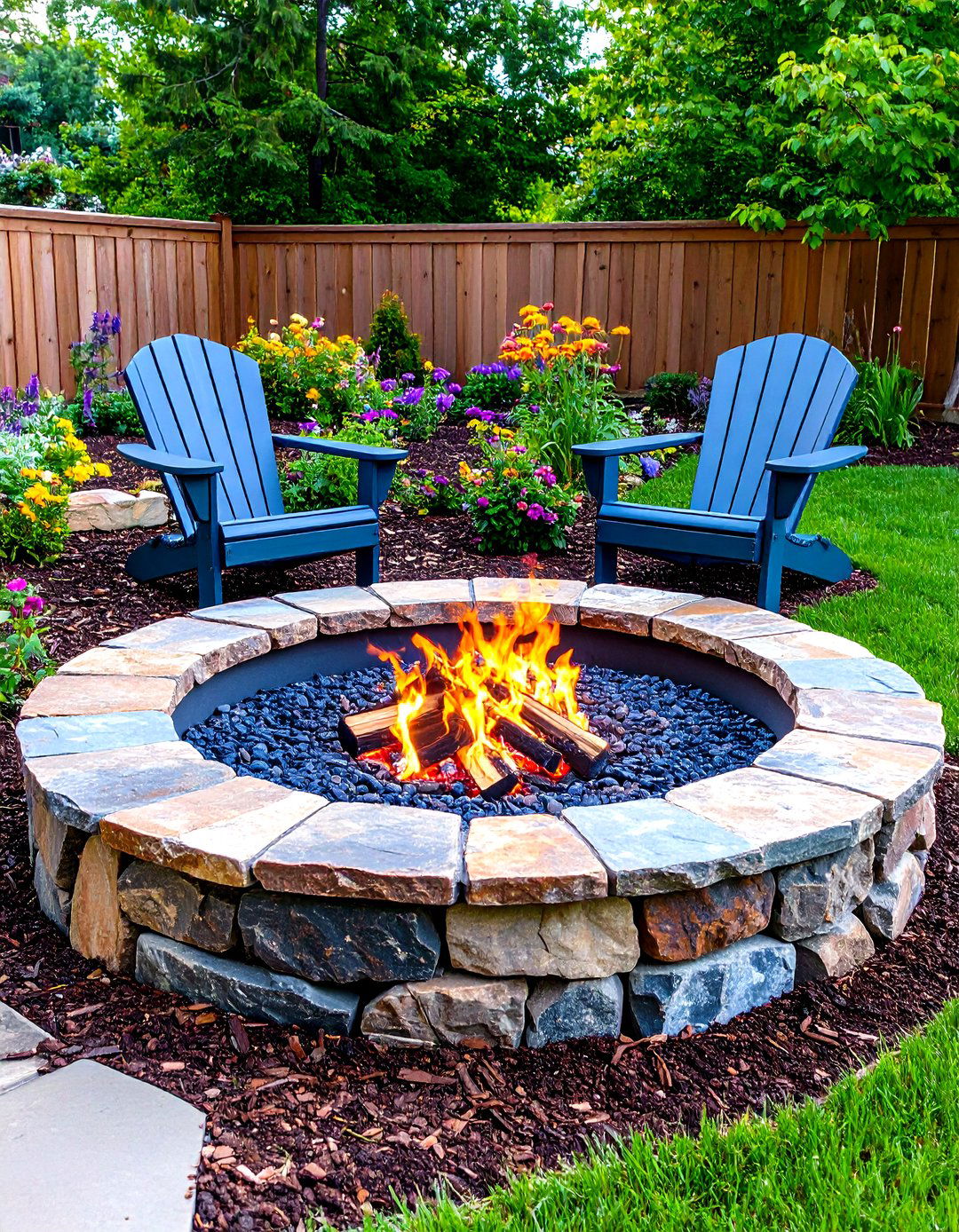
A compact circle of crushed lava rock set slightly below grade forms a safe, spark-resistant fire-pit zone, while generous mulched beds around it cloak your front yard in greenery instead of bare soil. Choose a metal bowl pit with a screen, then surround seating with Adirondack chairs painted to echo the stone’s color. Outdoor-living galleries show homeowners love the contrast between rugged rock and the soft mulch carpet, and the setup doubles as a social hub on chilly evenings. Plant aromatic sage and catmint in the mulch so fireside breezes carry subtle fragrance through long autumn and winter nights.
19. Under-Cap Lighting Along Rock Edging and Mulch
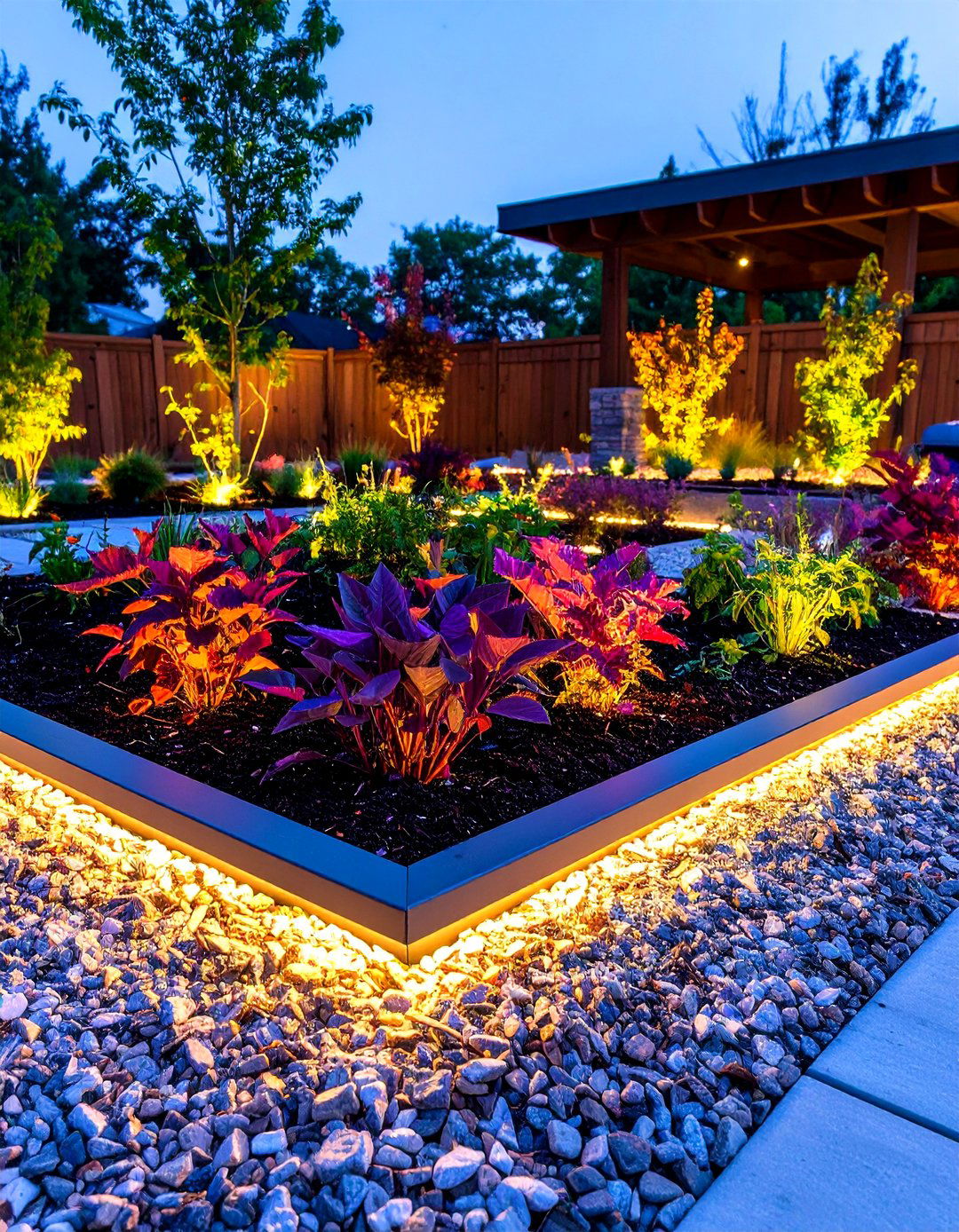
With the flip of a switch, low-profile LED strips tucked beneath flat capstones bathe adjacent mulch beds in a warm evening glow, making your front yard both safer and more welcoming. Thread the wiring under the rock edge to conceal cords, and choose solar transformers when outlets are scarce. Budget refresh articles note that accent lighting instantly elevates humble materials and extends outdoor living hours without a major renovation. Aim beams toward contrasting rock textures so shadows dance across the mulch, showcasing foliage silhouettes and giving nighttime curb appeal that rivals daylight views after even the shortest winter days.
20. Ornamental Dry Creek With Mulch Islands
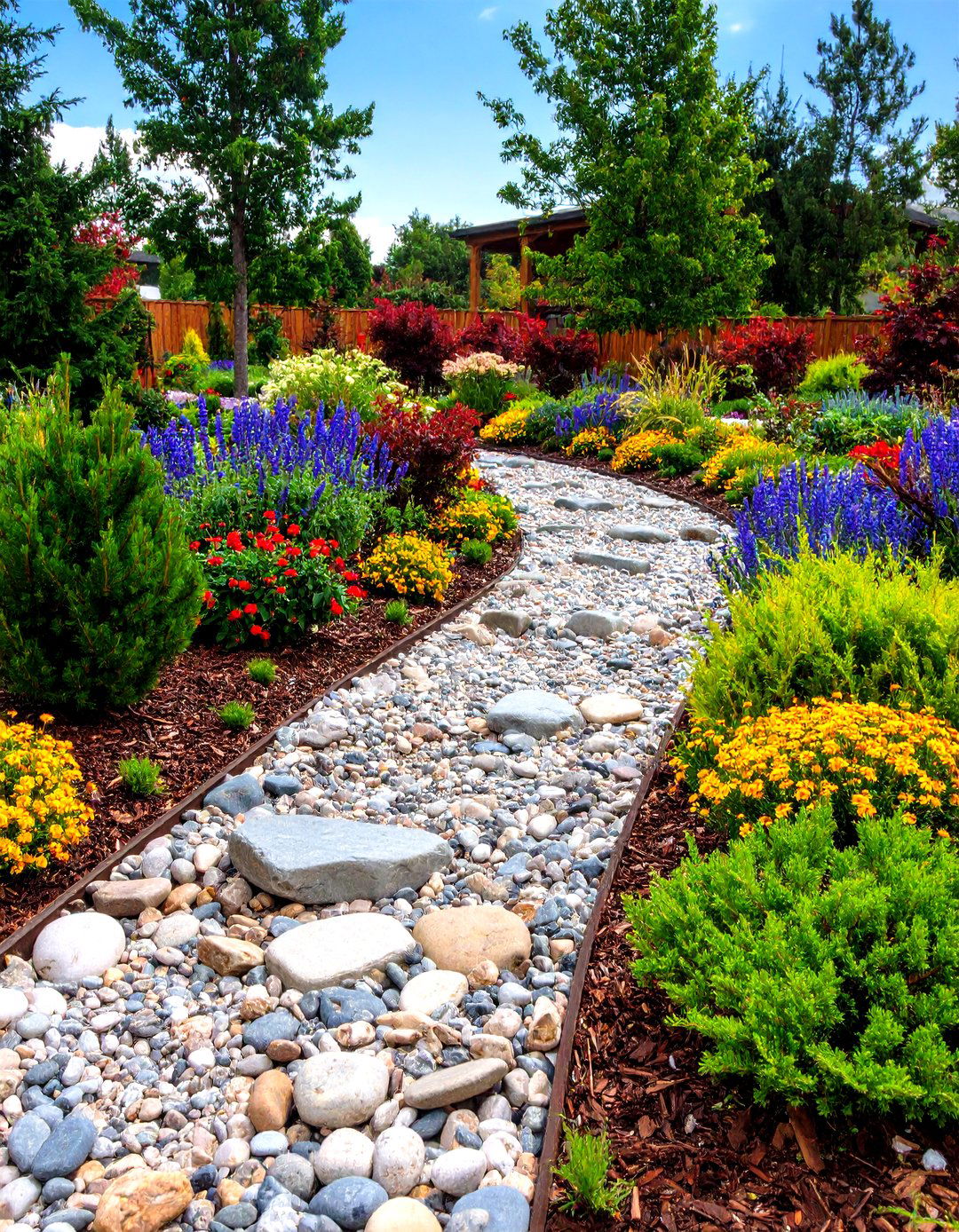
Finally, thread a narrow dry creek of polished river stones diagonally across the lawn, breaking up expanses of grass and guiding rainwater toward a curbside drain. On each side, sculpt mulch islands planted with dwarf conifers and perennial color bursts, their organic shapes contrasting with the stony ribbon. Garden creators in shared online projects report that this composition looks dynamic from every angle and keeps mowing simple because wheels glide right over the rock edge. Add a simple wooden footbridge where the walkway intersects the creek for fairytale charm without increasing maintenance or demanding seasonal hardscape touch-ups at all.
Conclusion:
Rocks and mulch prove themselves as the ultimate design duo—hard and soft, permanent and renewing, visual and functional. Whether you sculpt a winding stone creek, seat a single heroic boulder, or simply edge beds for tidy transitions, every idea above turns front yard landscaping into an asset that works harder than it asks from you. Studies and homeowners’ reports consistently show less watering, fewer weeds, and more compliments when these materials replace high-maintenance turf. Choose colors that echo your façade, refresh the mulch each spring, and enjoy a welcoming approach that stays handsome through all four seasons.


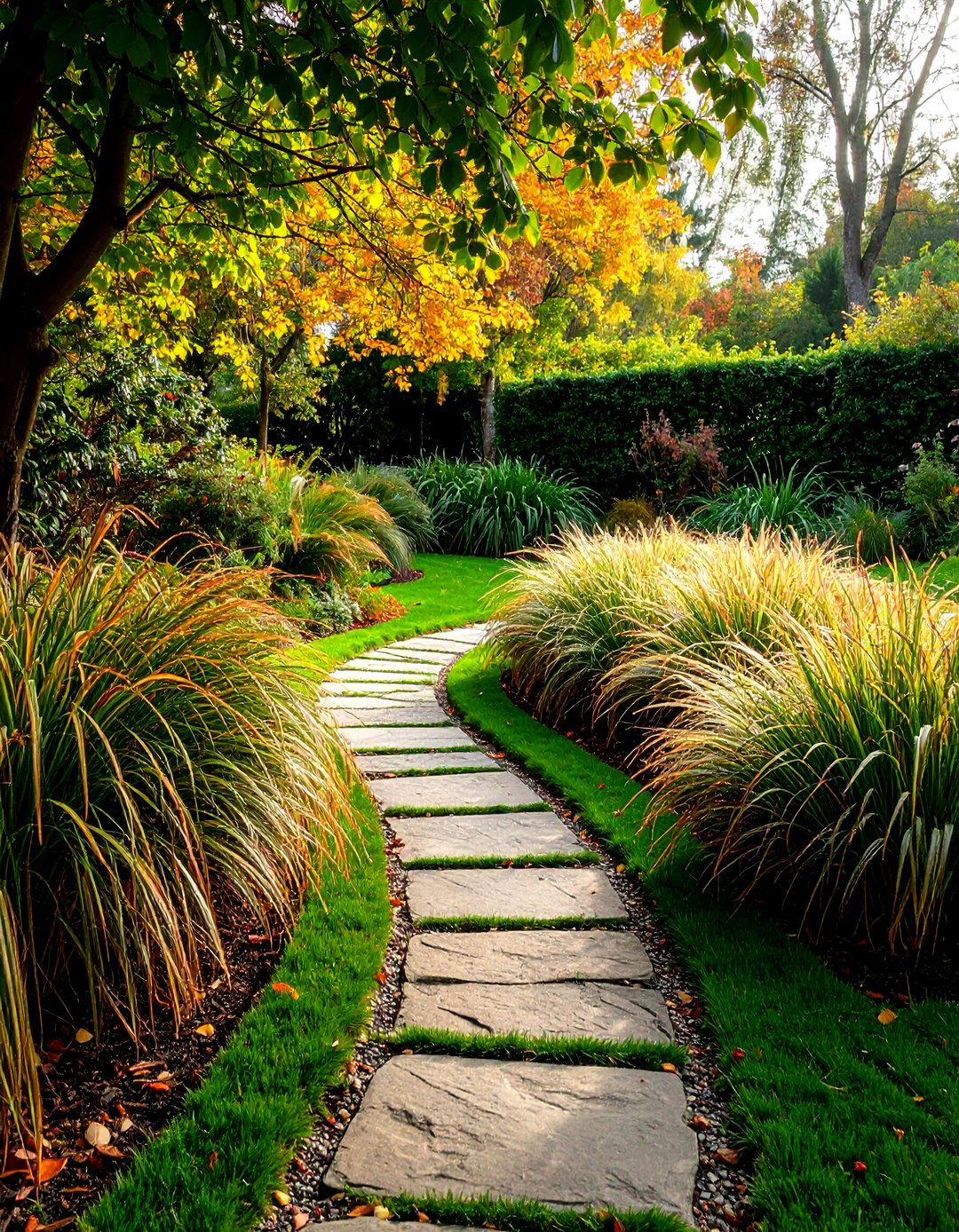
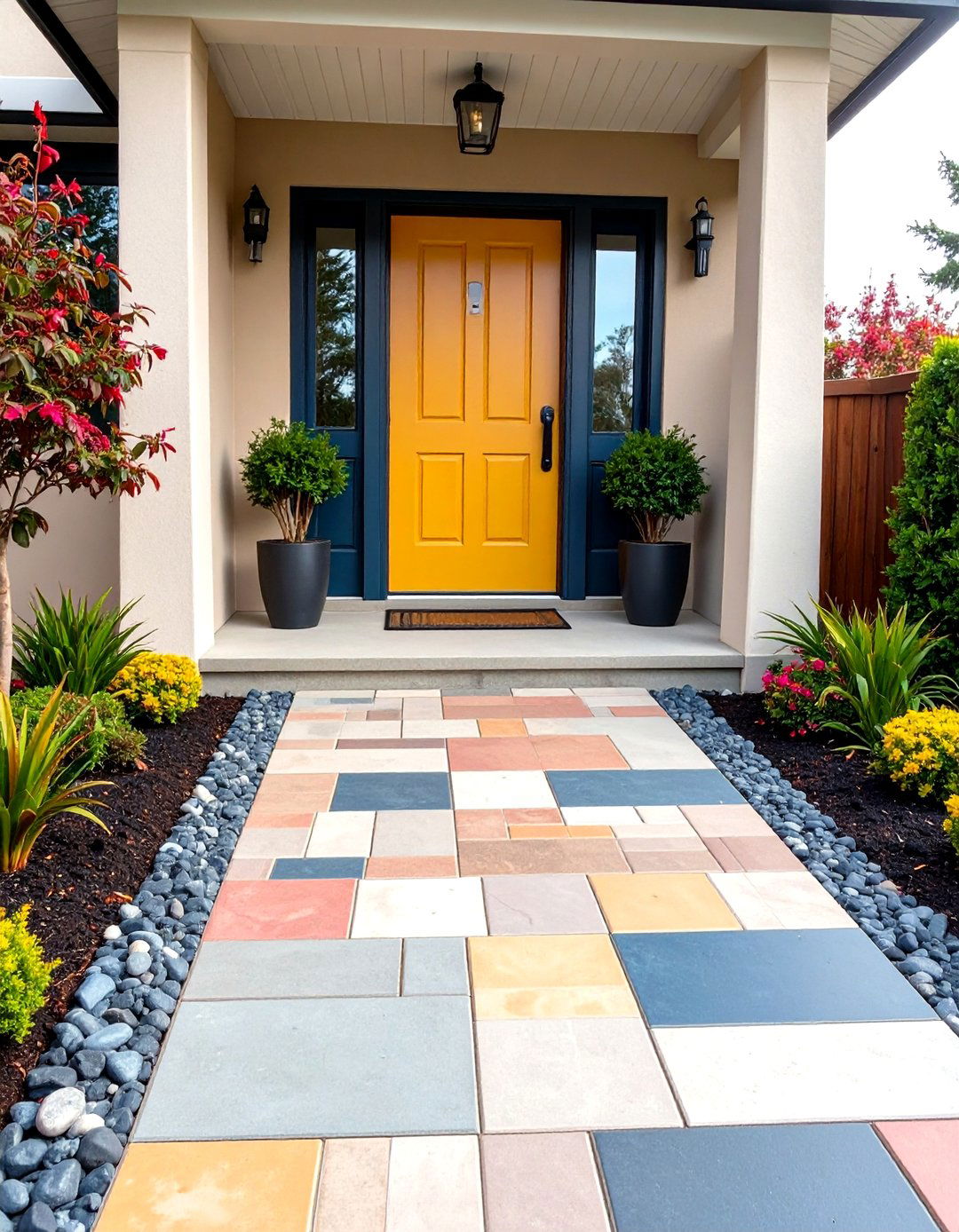
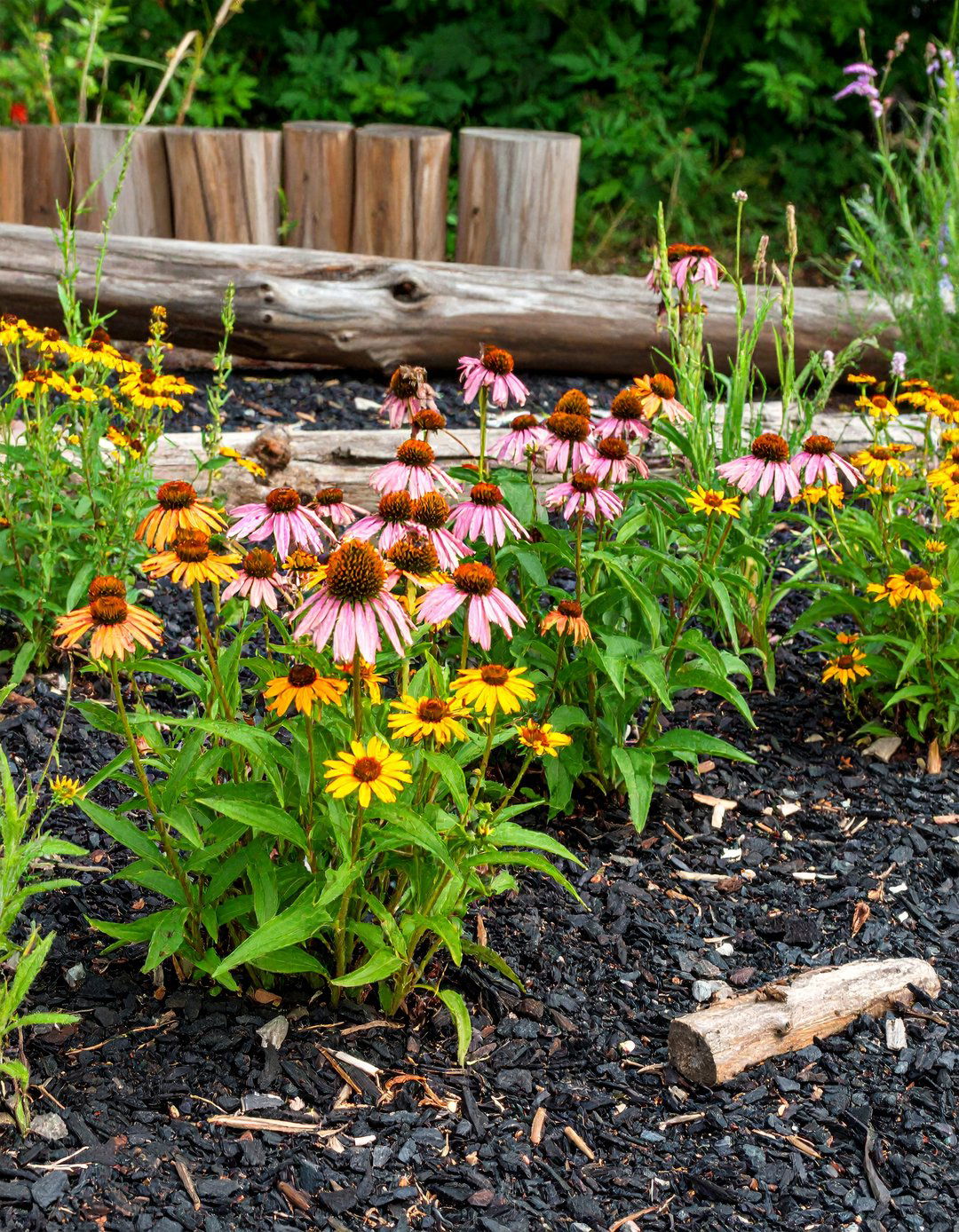
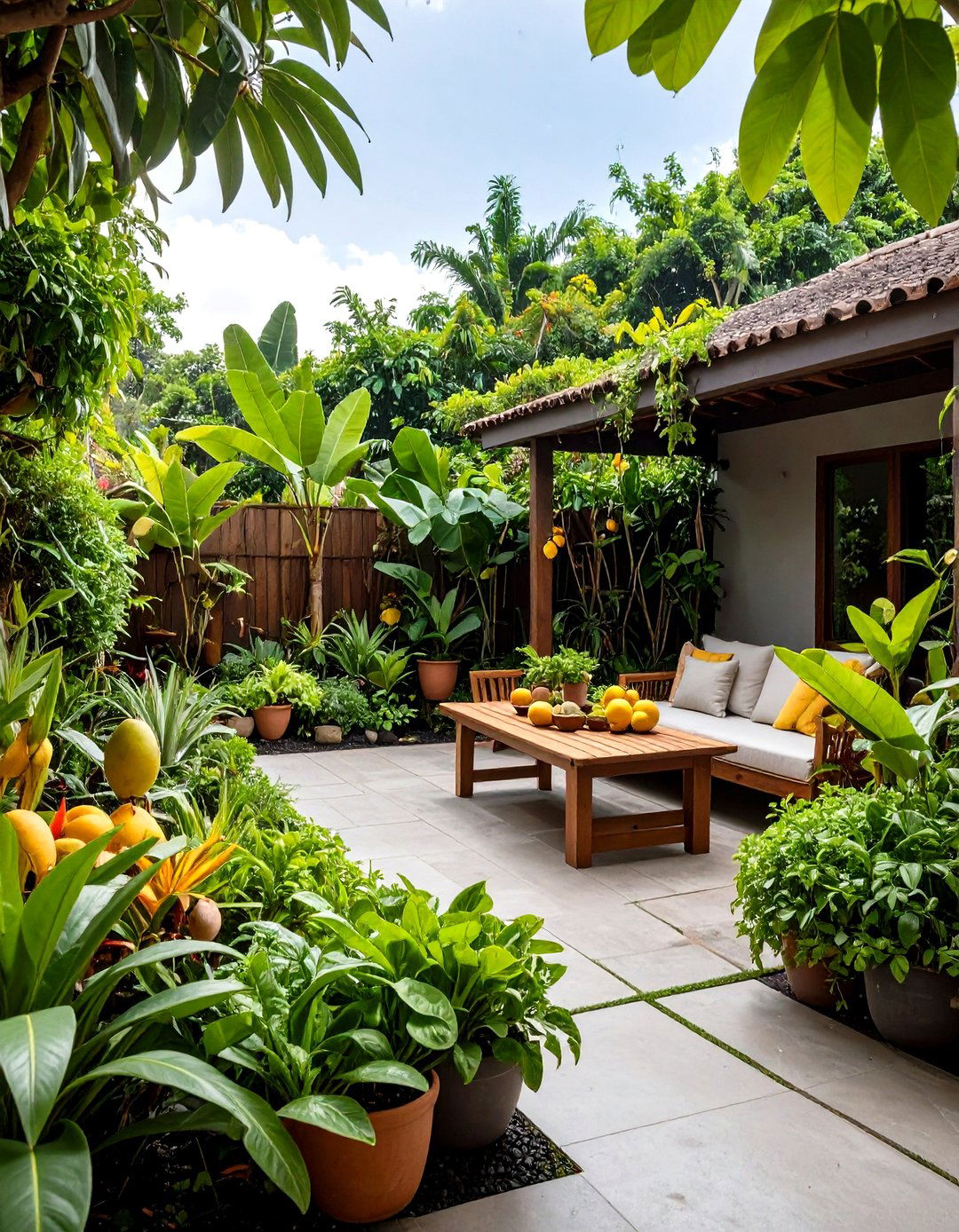
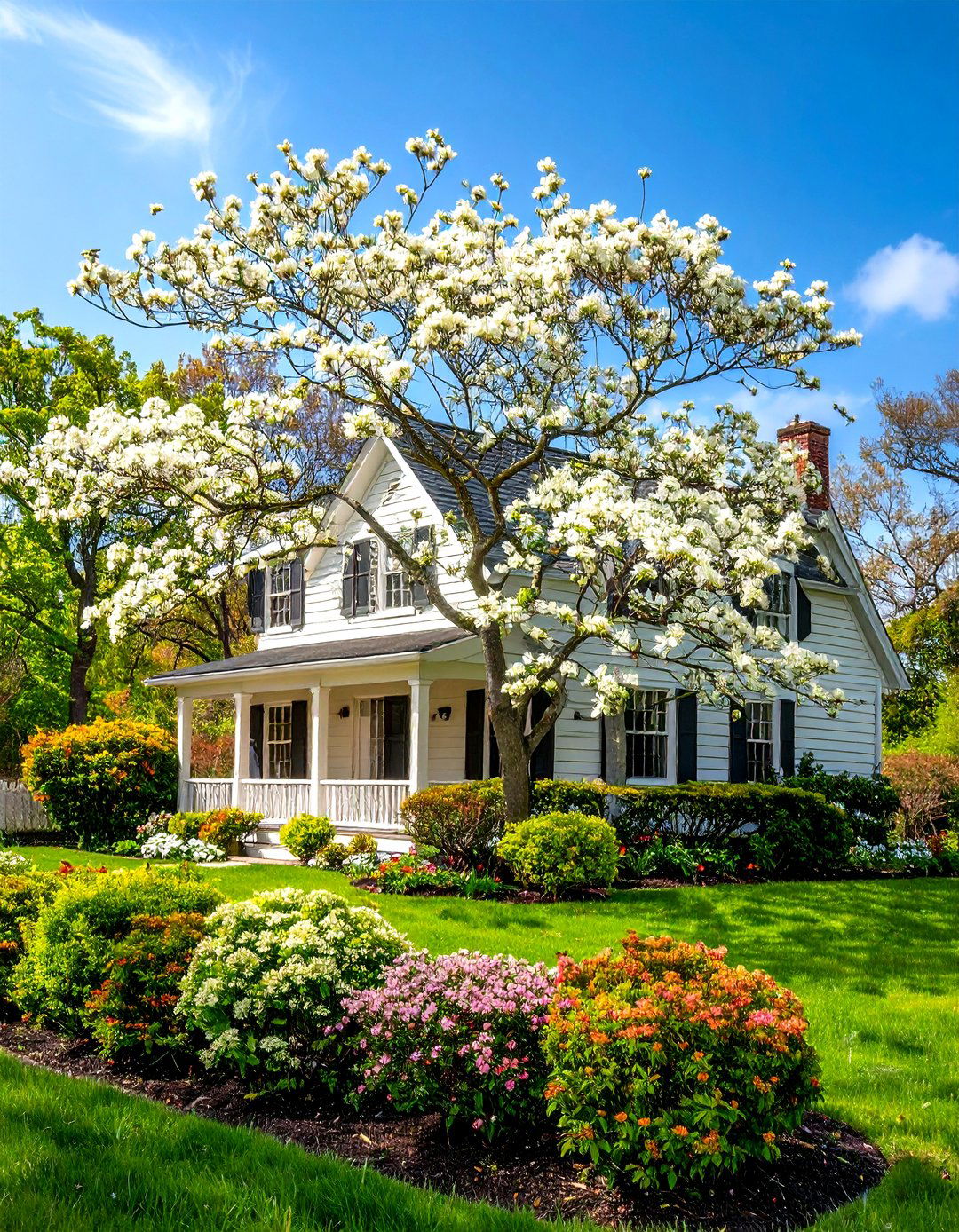
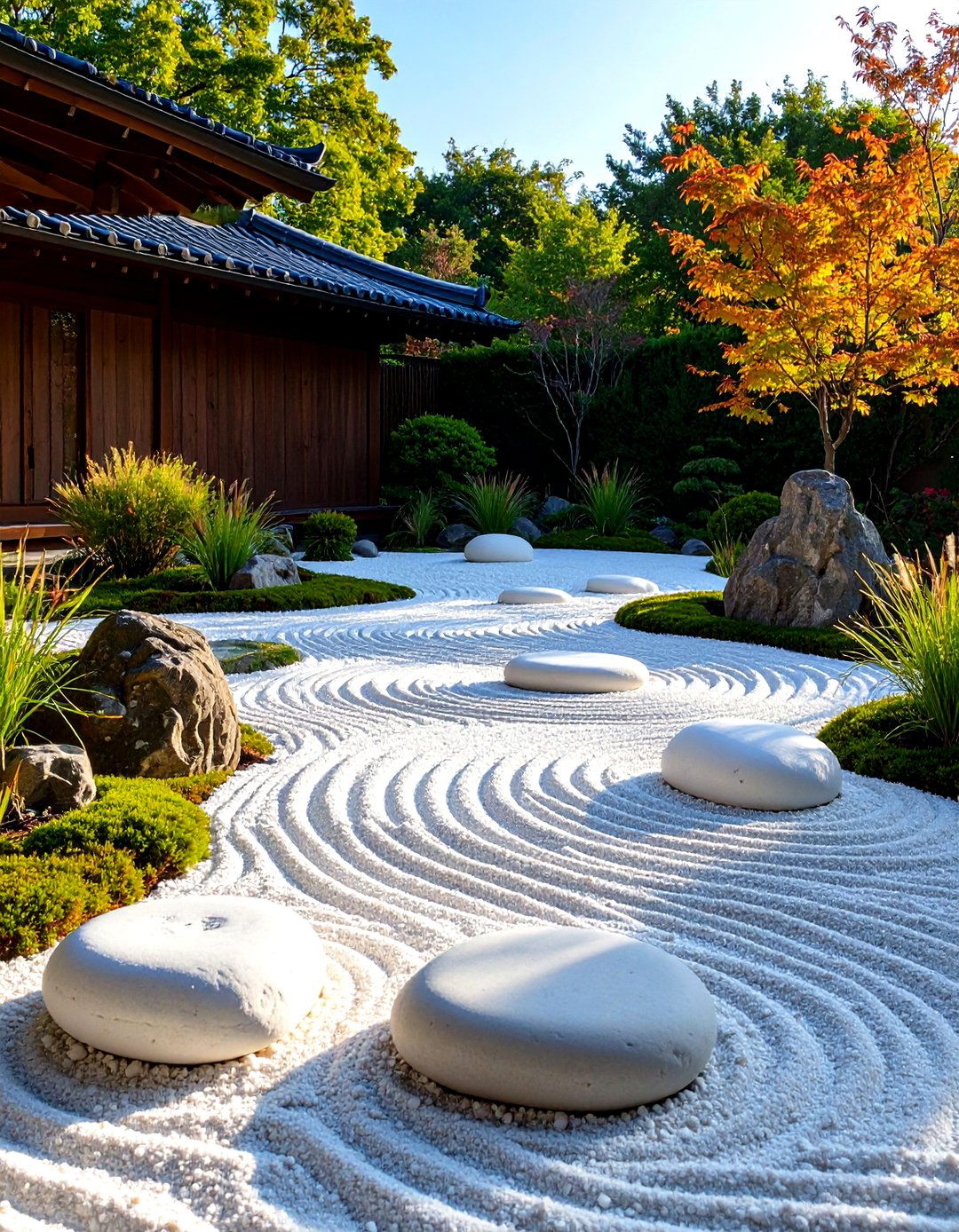
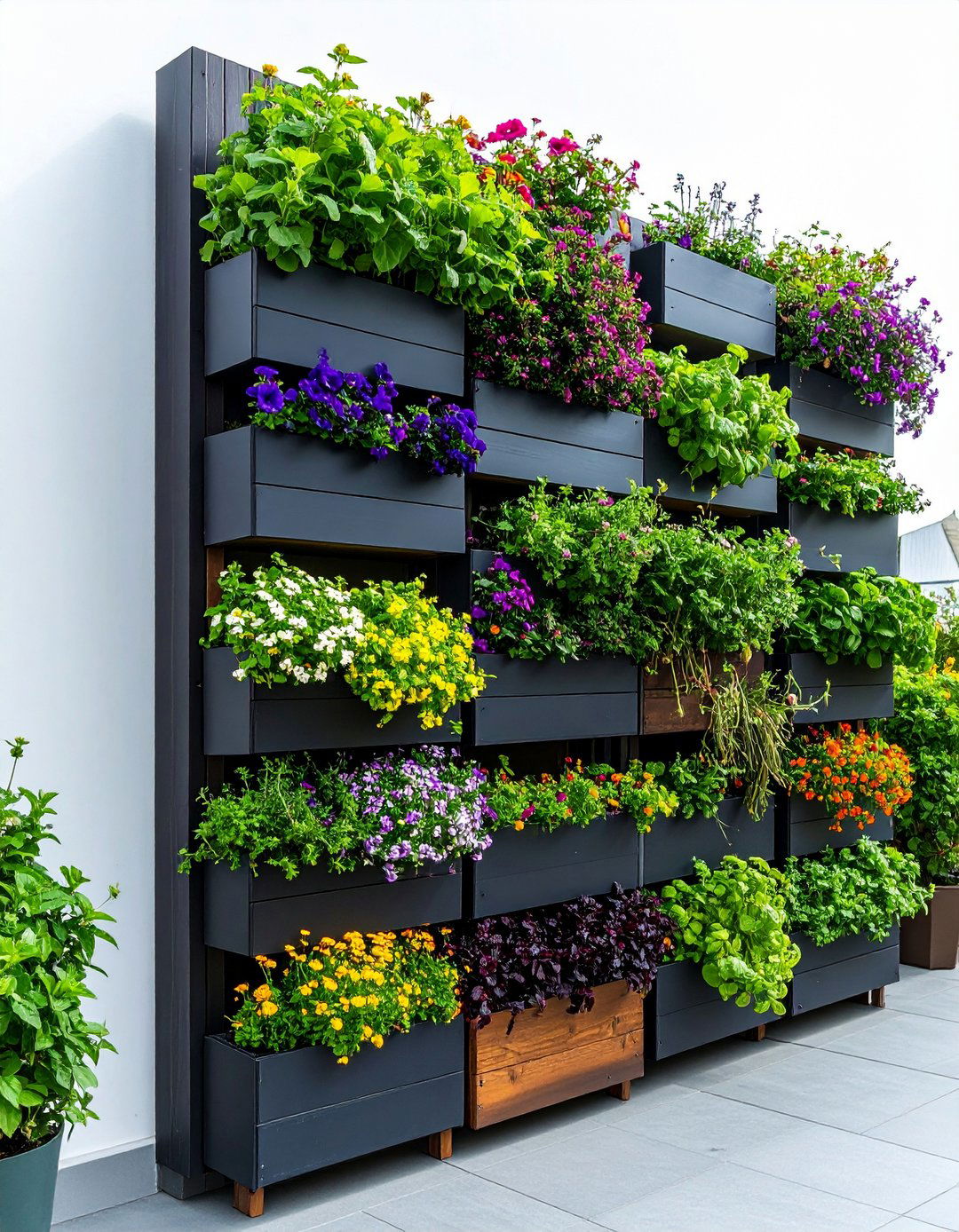
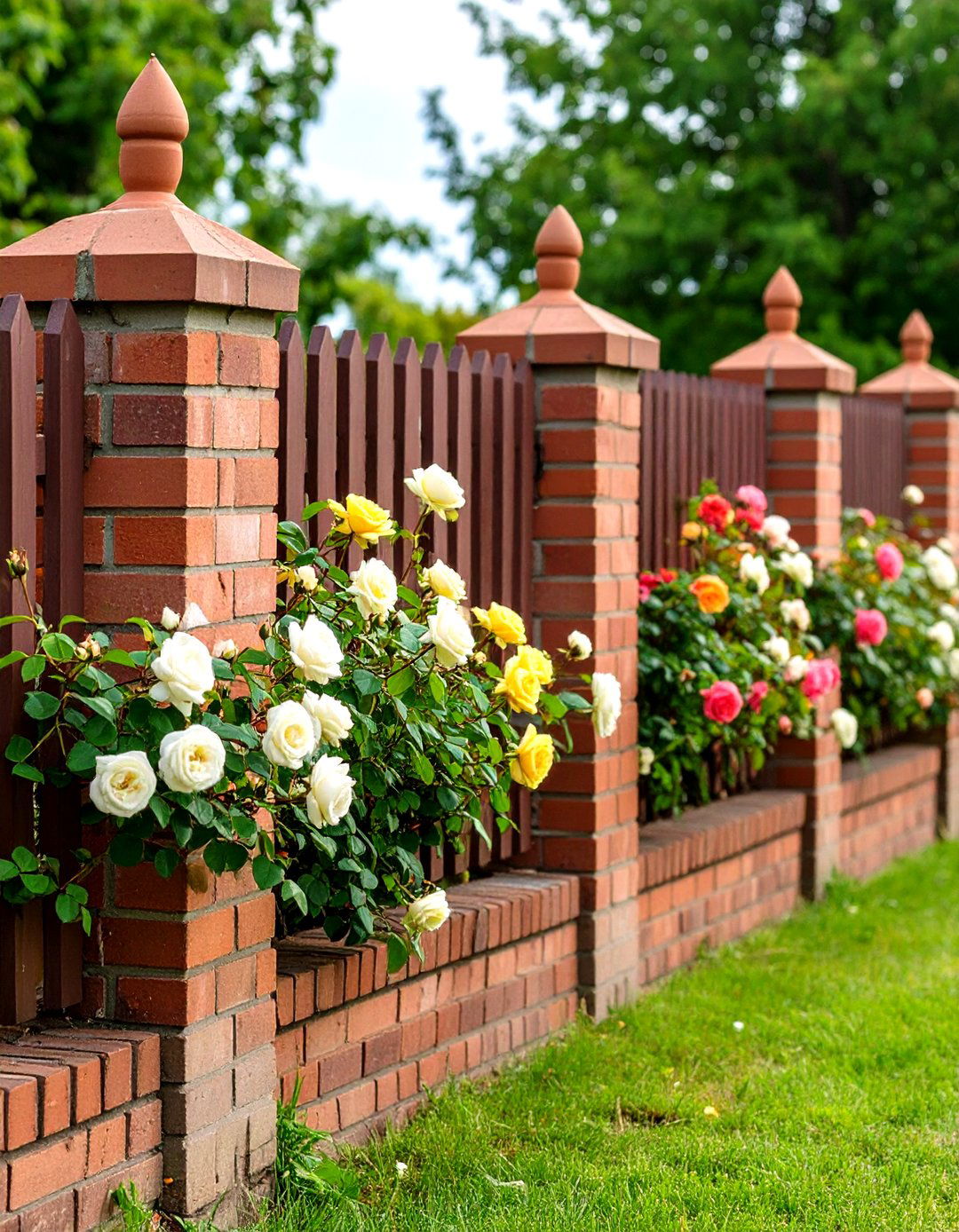
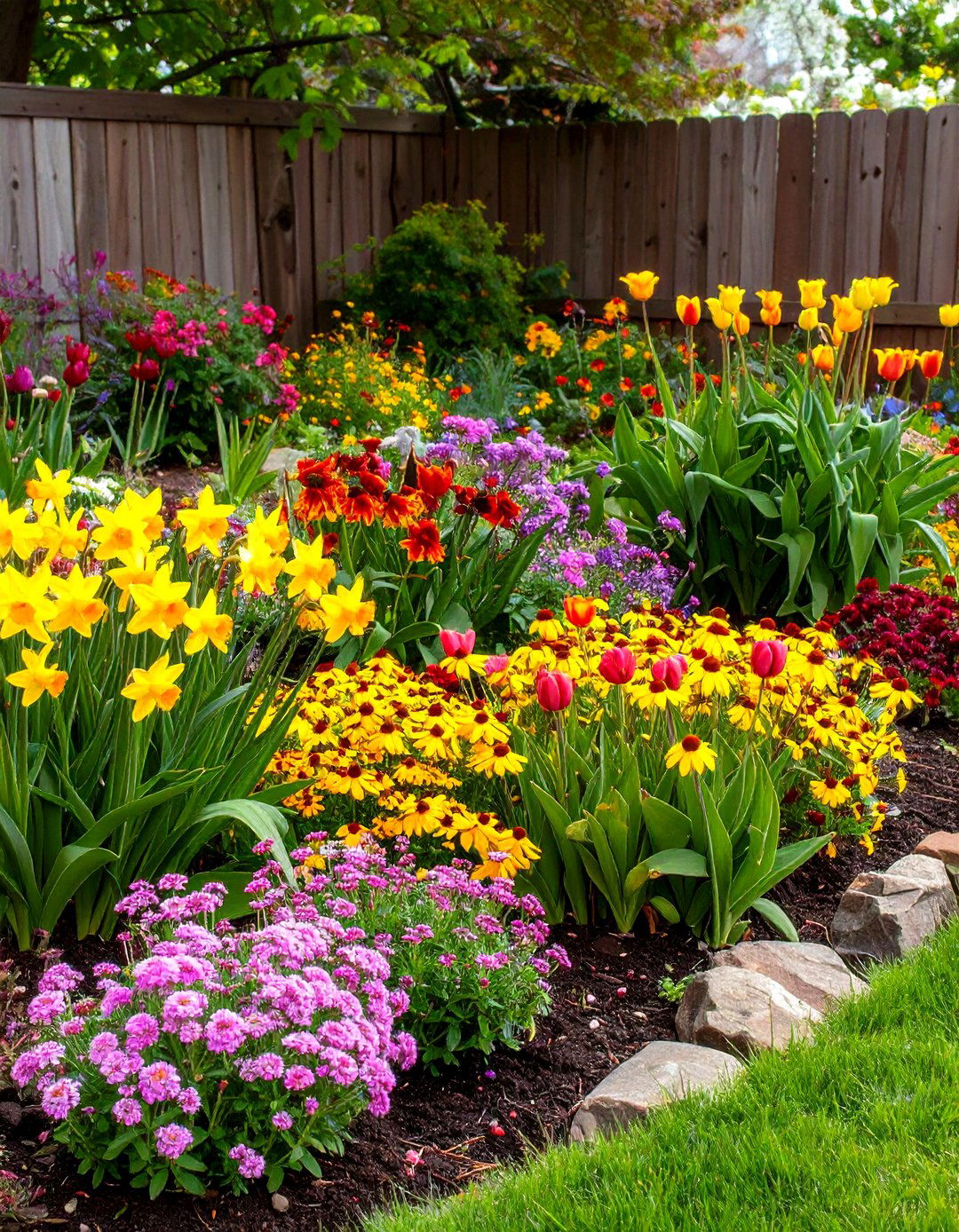
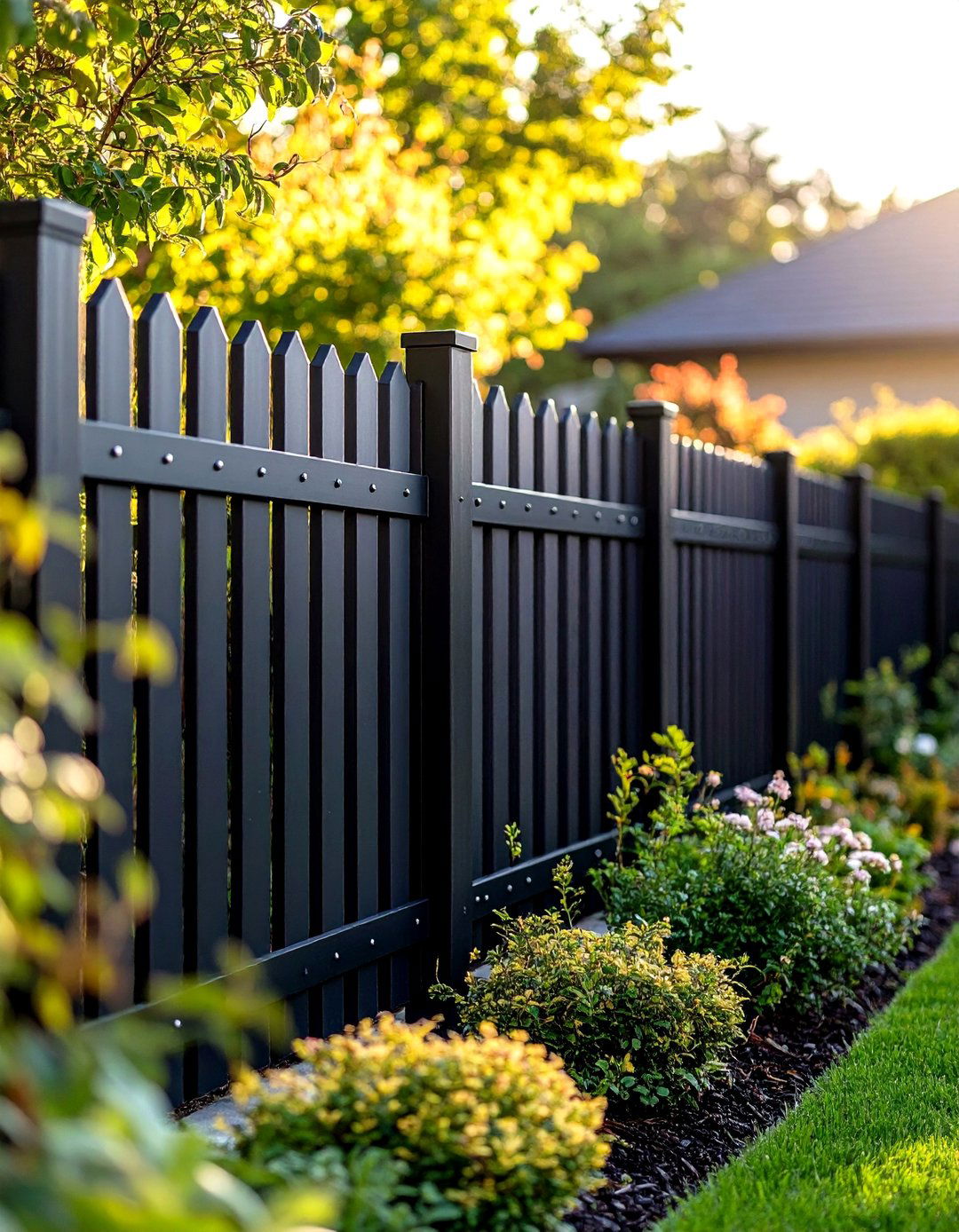
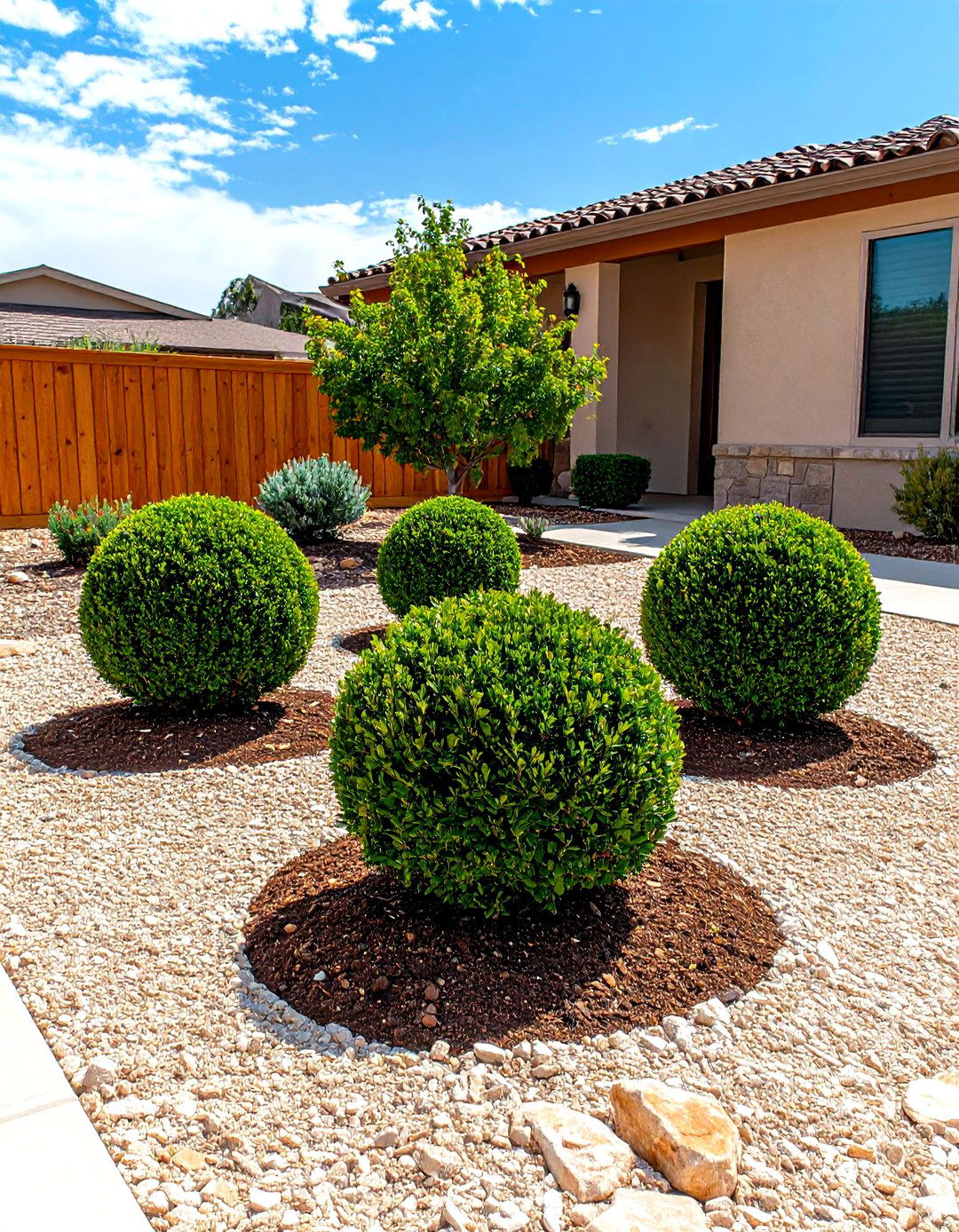
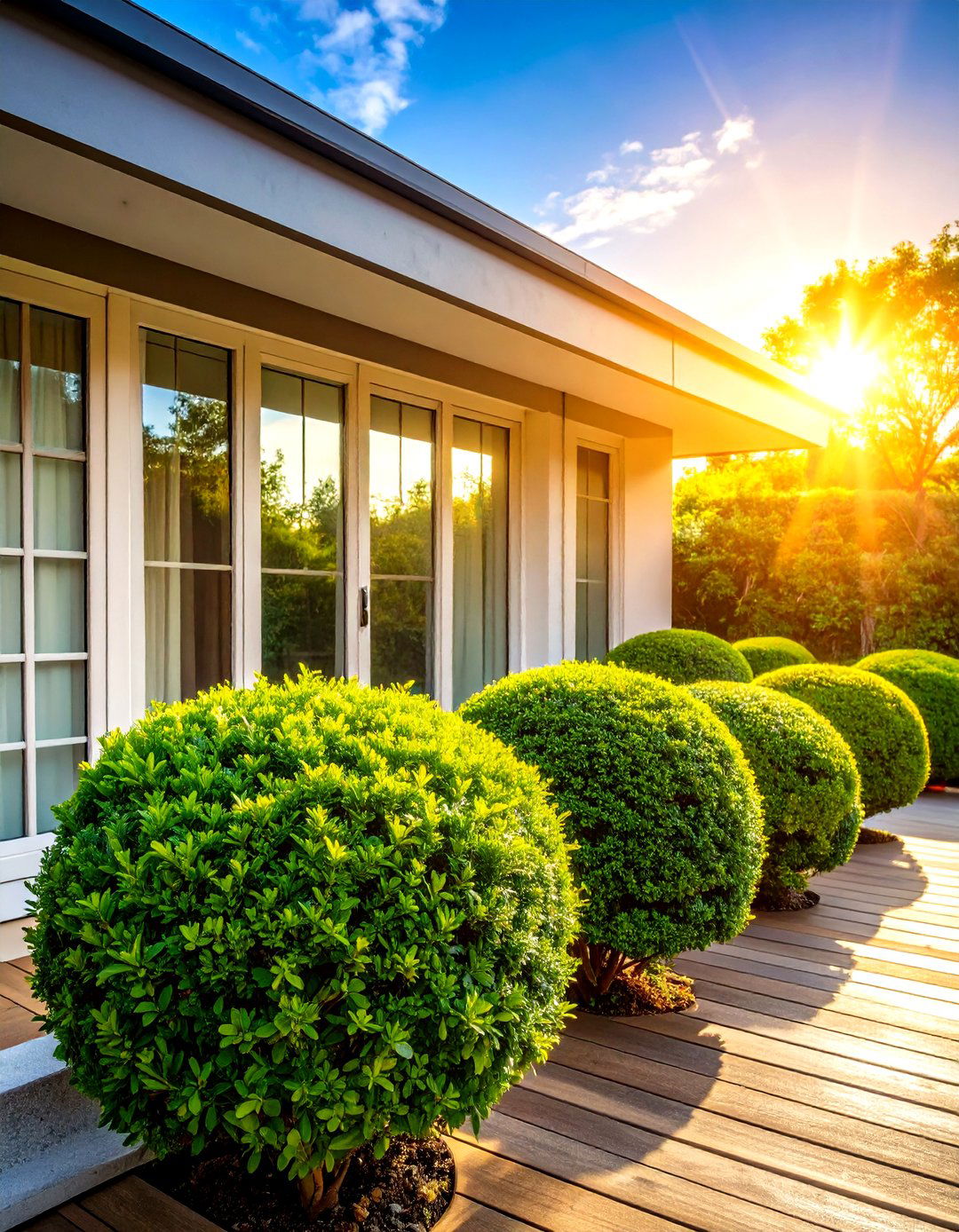
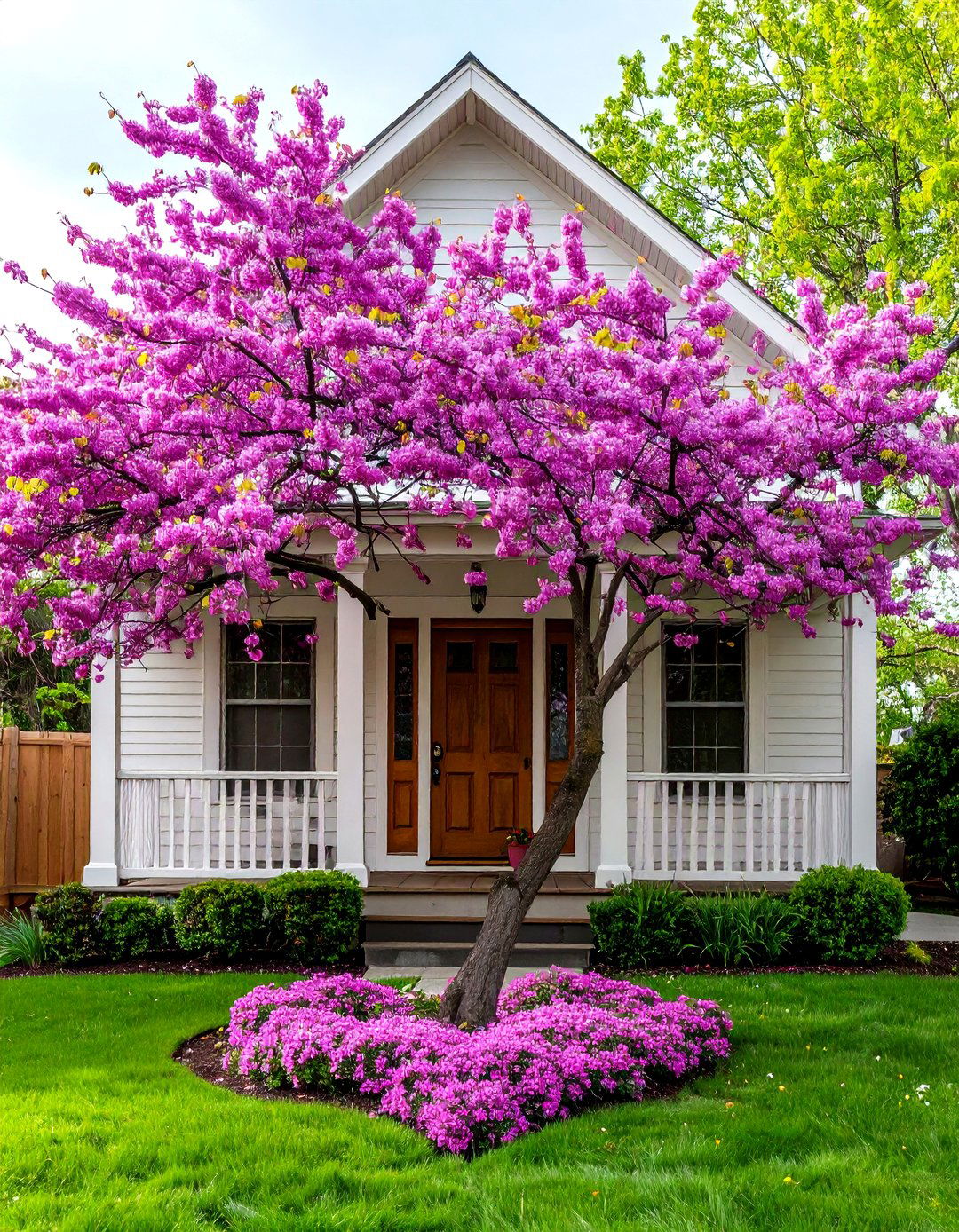
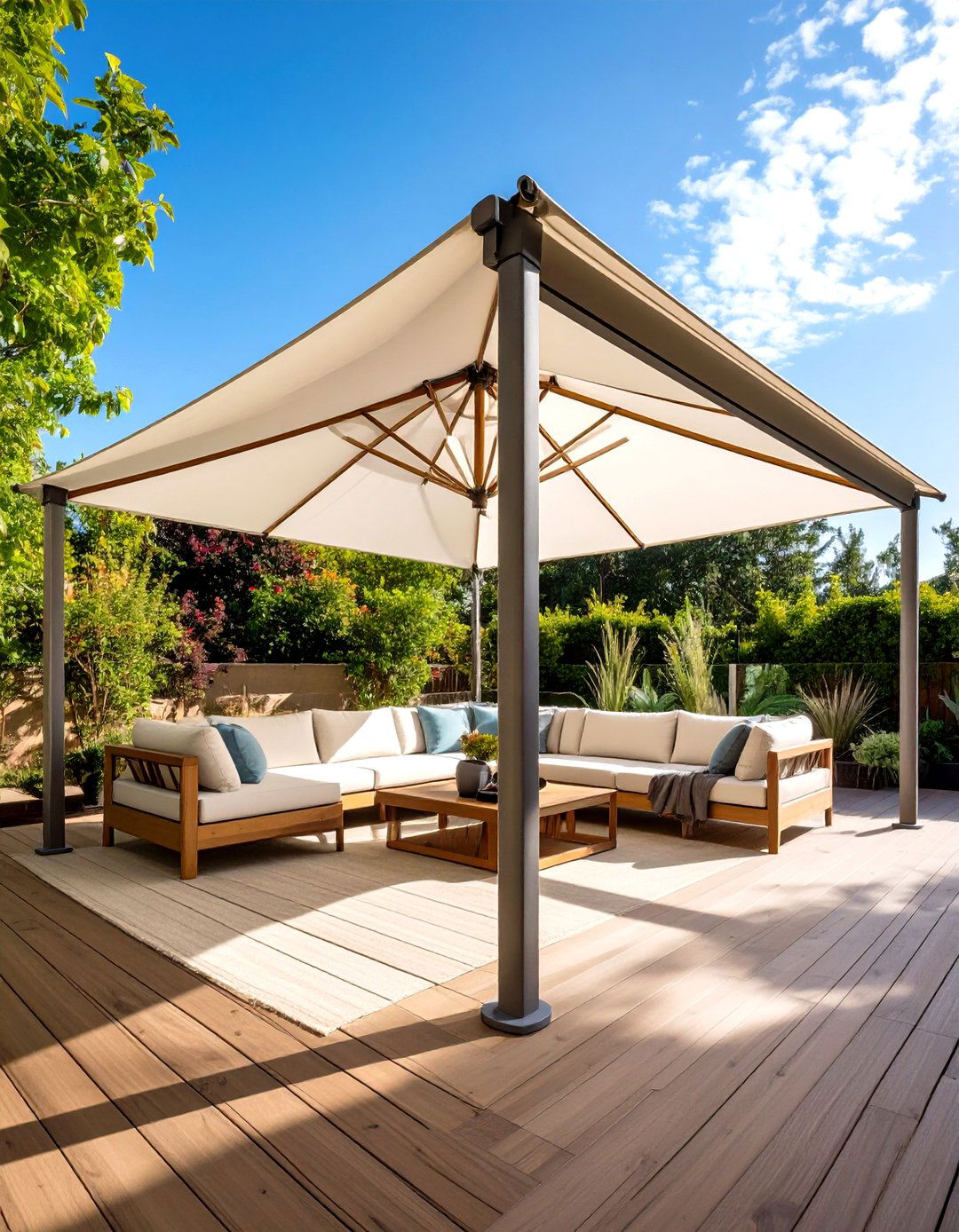

Leave a Reply